DIWire Lamp
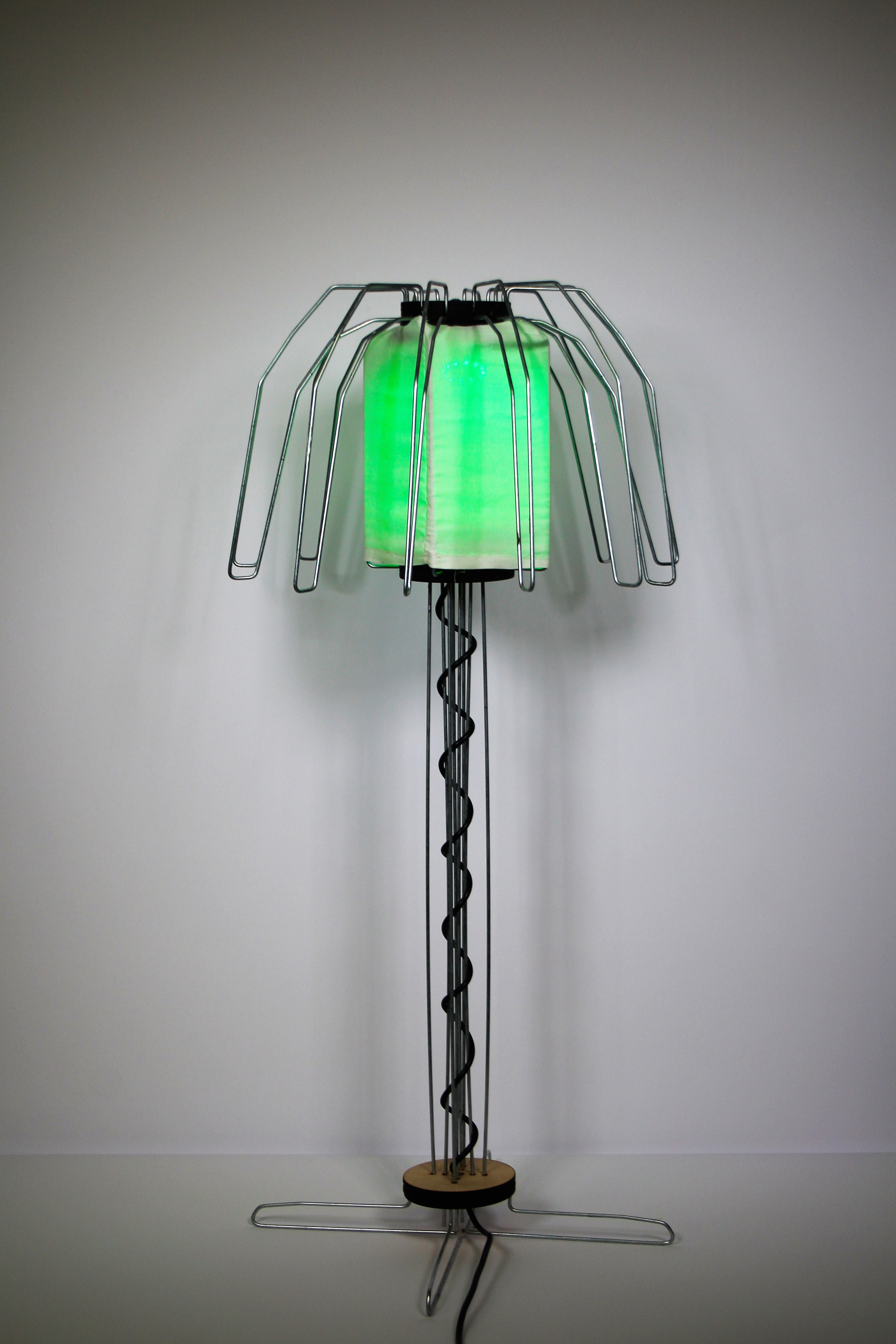
The DIWire lamp is a product that came from multiple prototypes using the DIWire Bender. It started as an upside down bowl on top of a poorly made lamp base. After multiple iterations it turned into a fully functional lamp that changes colors and utilizes multiple machines in its making. Im a senior at Riverpoint Academy. We have access to high quality equipment like CNC machines, 3D Printers, and Laser Cutters. This lamp was one of my projects that went trough many iterations. This is my result. Enjoy
Downloads
Materials
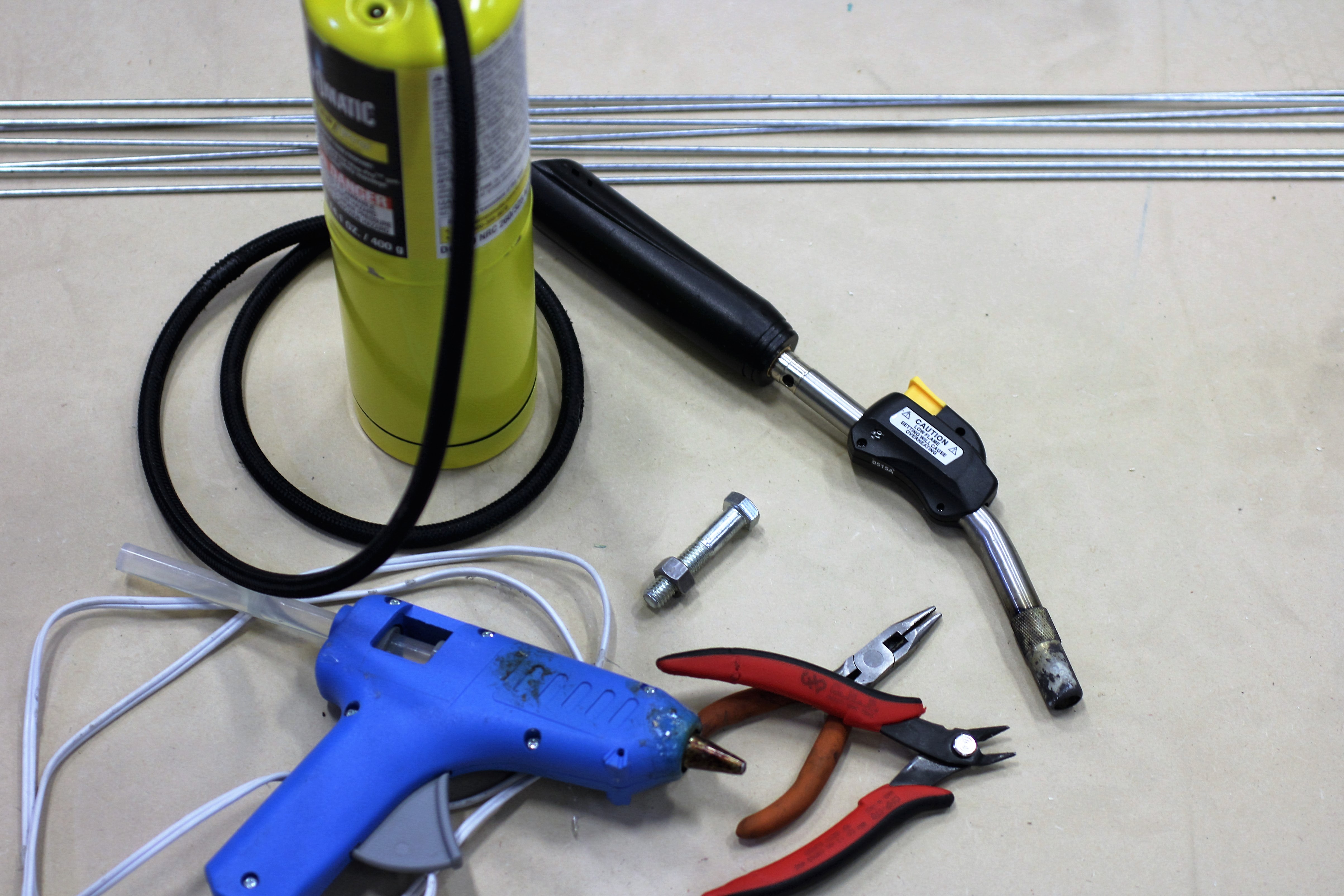
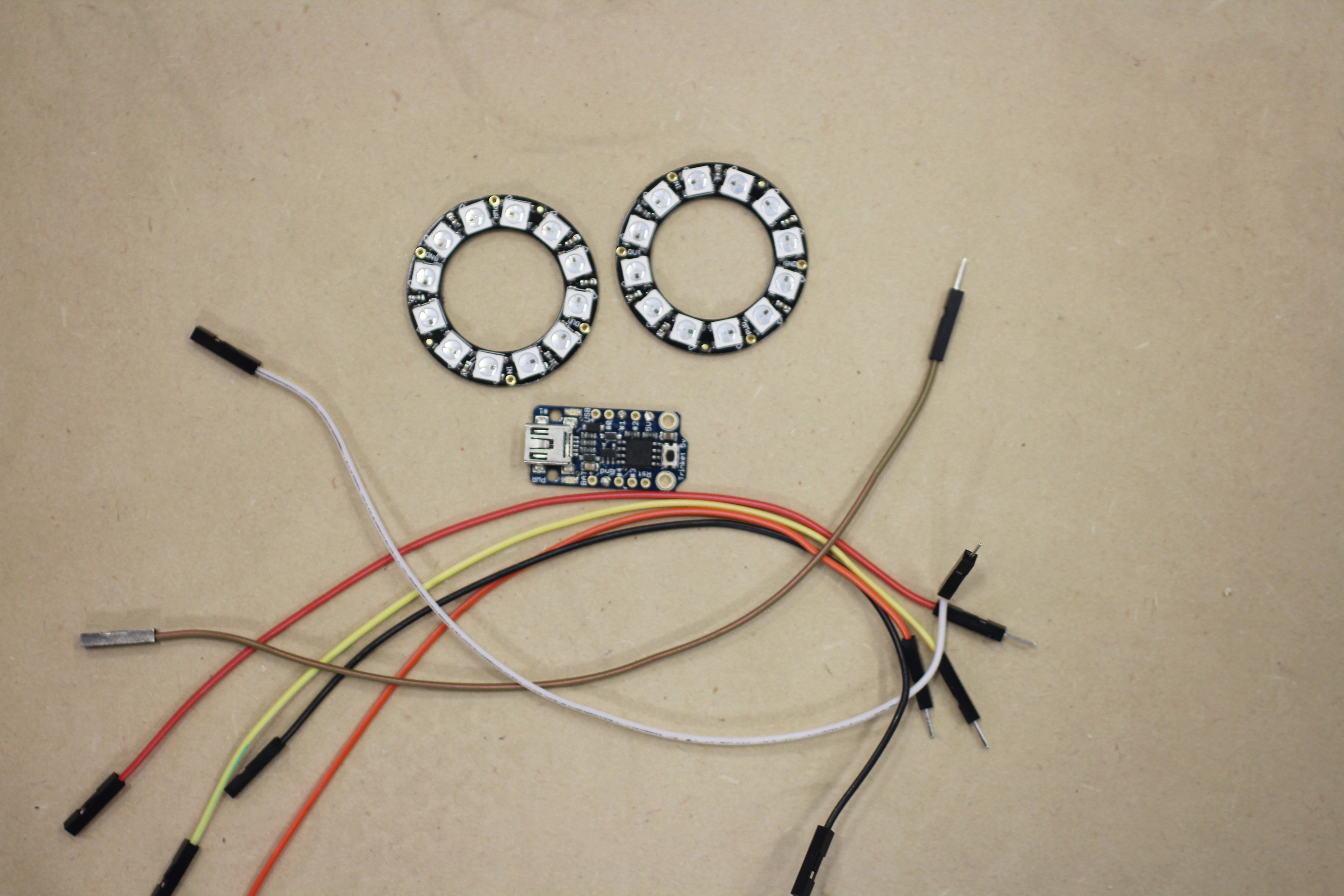
Download and unzip "Lamp Instructable.zip" from above
Sewing Machine
2’x1’ Piece of White Cloth
16”x16”x3mm Pieces of MDF (x2)
⅛’’x12’ pieces of wire (x12)
Hot Glue Gun
Flush Cutters
2’’ long bolt with a washer and nut
Soldering Iron and Solder
Bending the Wire
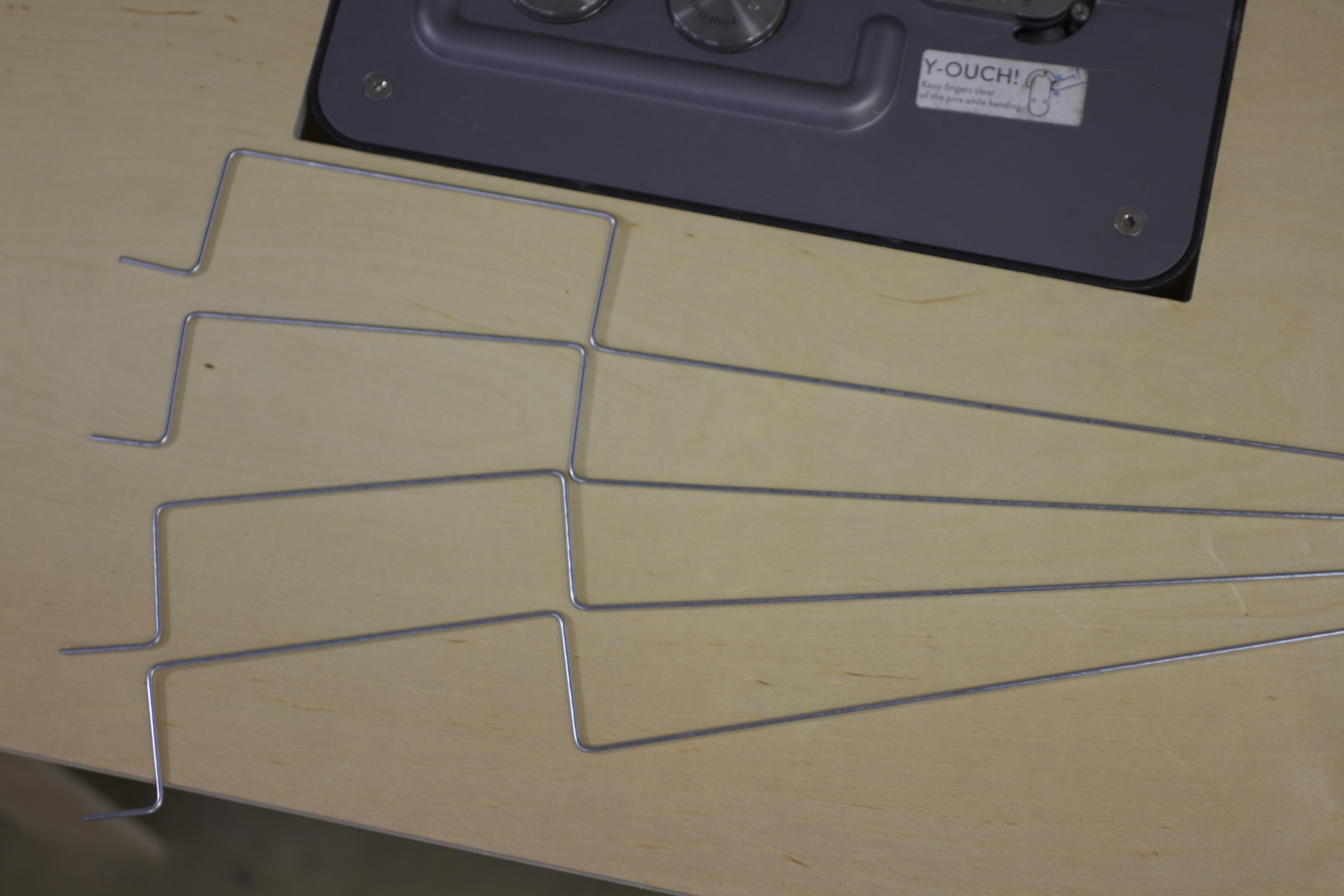
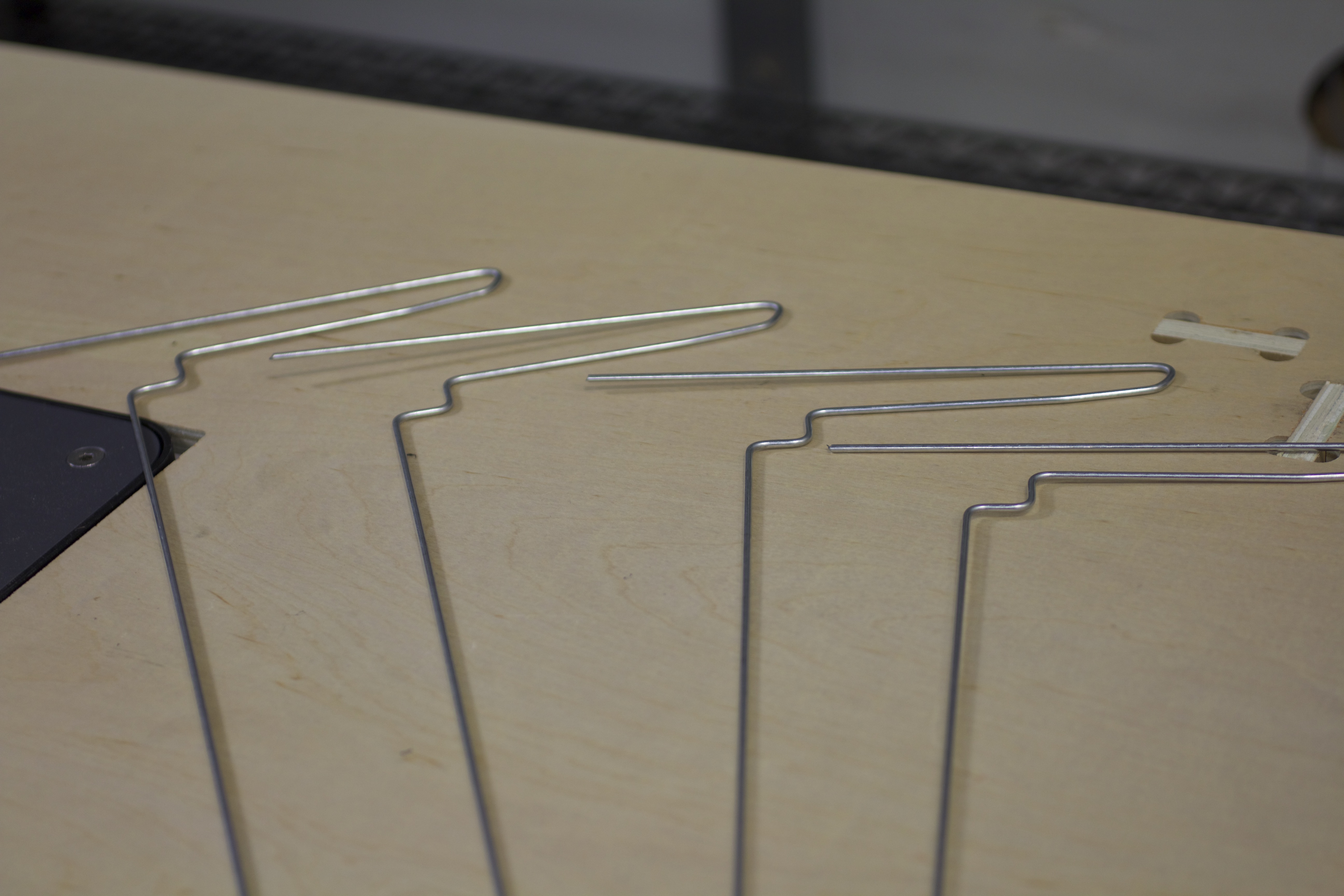
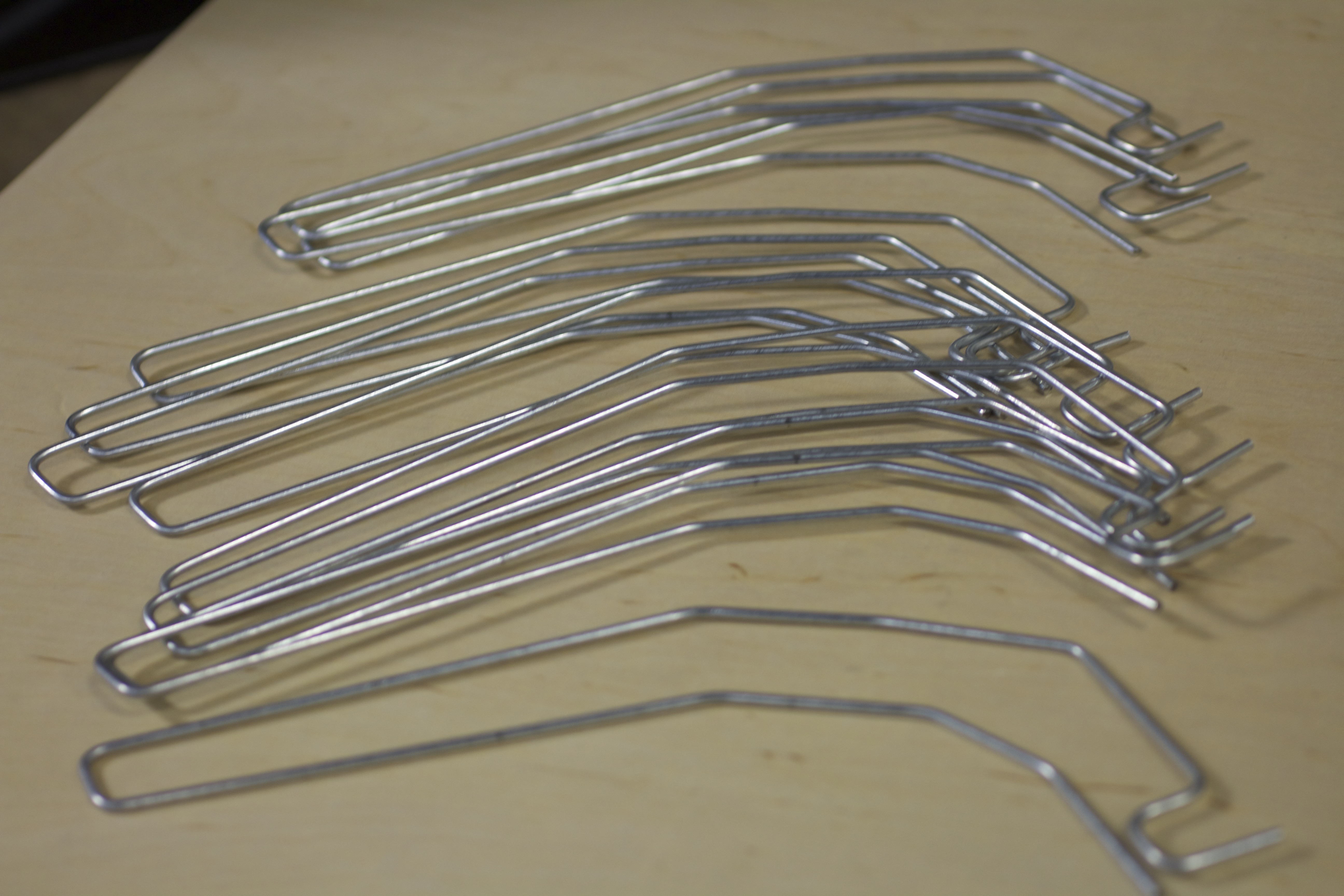
A. Inside the zipped file, open the folder that is labeled “Wire Bent Parts”. Inside of this folder you will find three parts that need to be bent. Bend 4 “Lamp Center Posts”, 4 “Lamp Outer Posts”, and 12 “Lampshade Spokes”.
B. Set these pieces aside as they will be used later in the assembly.
Laser-cut Pieces
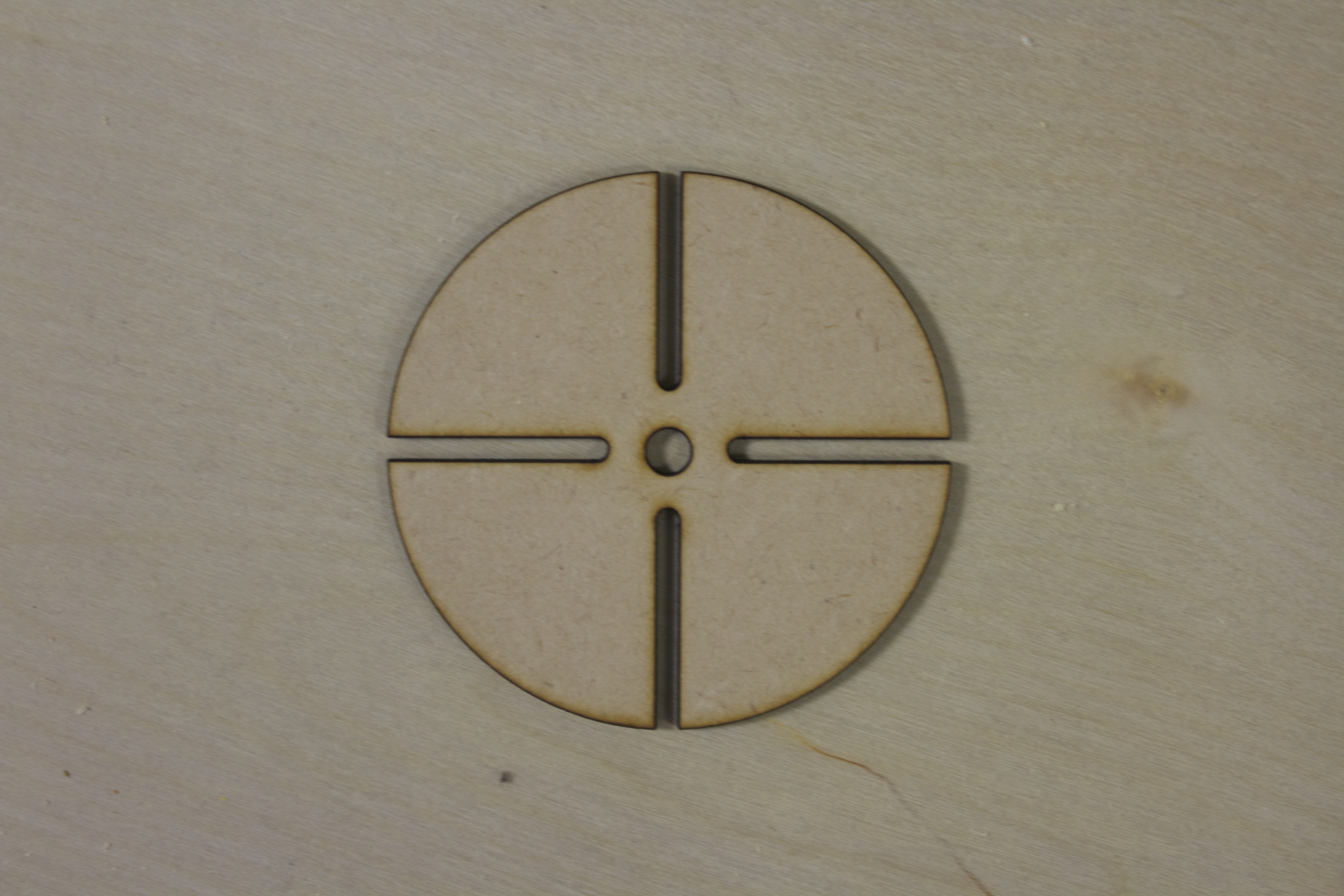
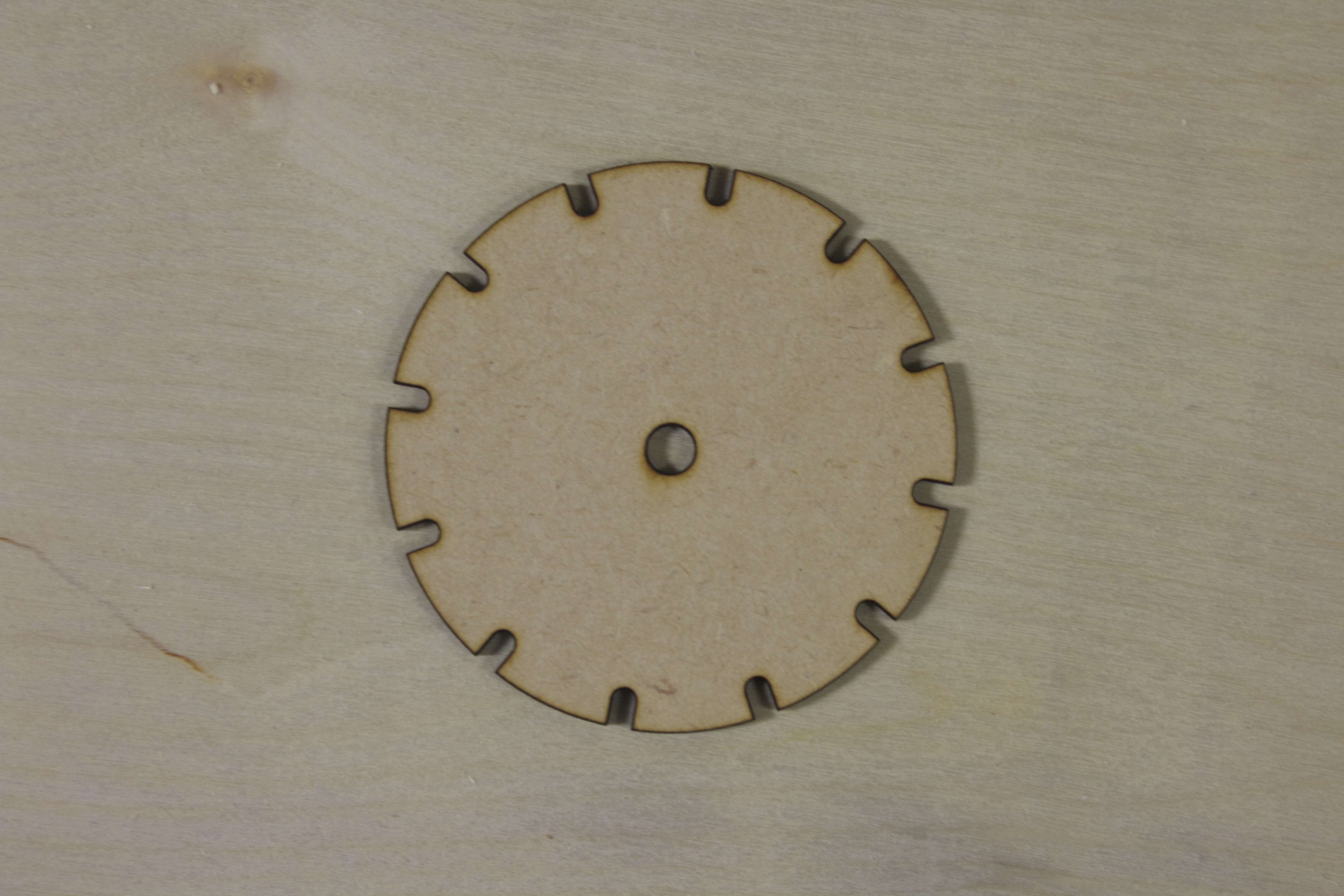
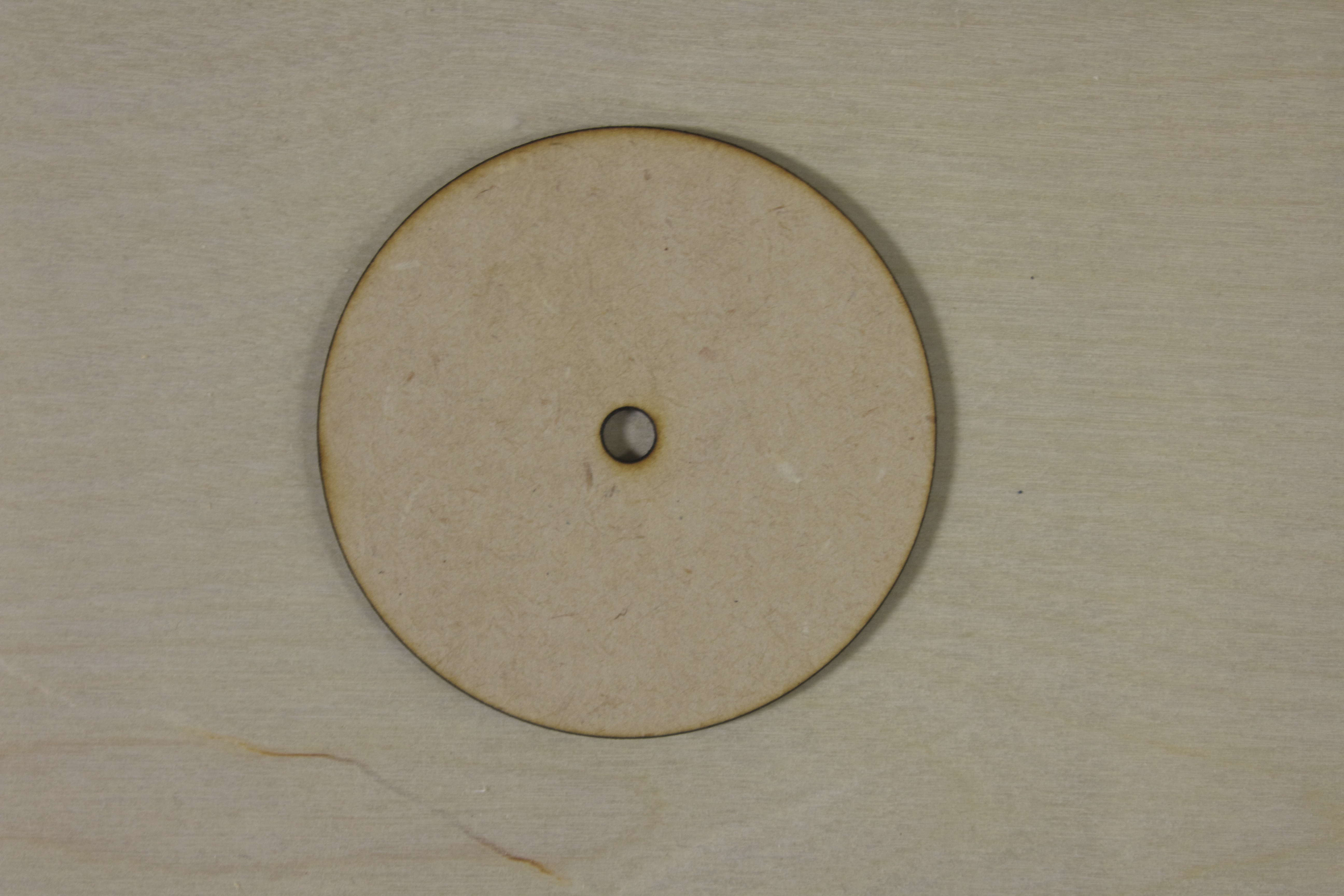
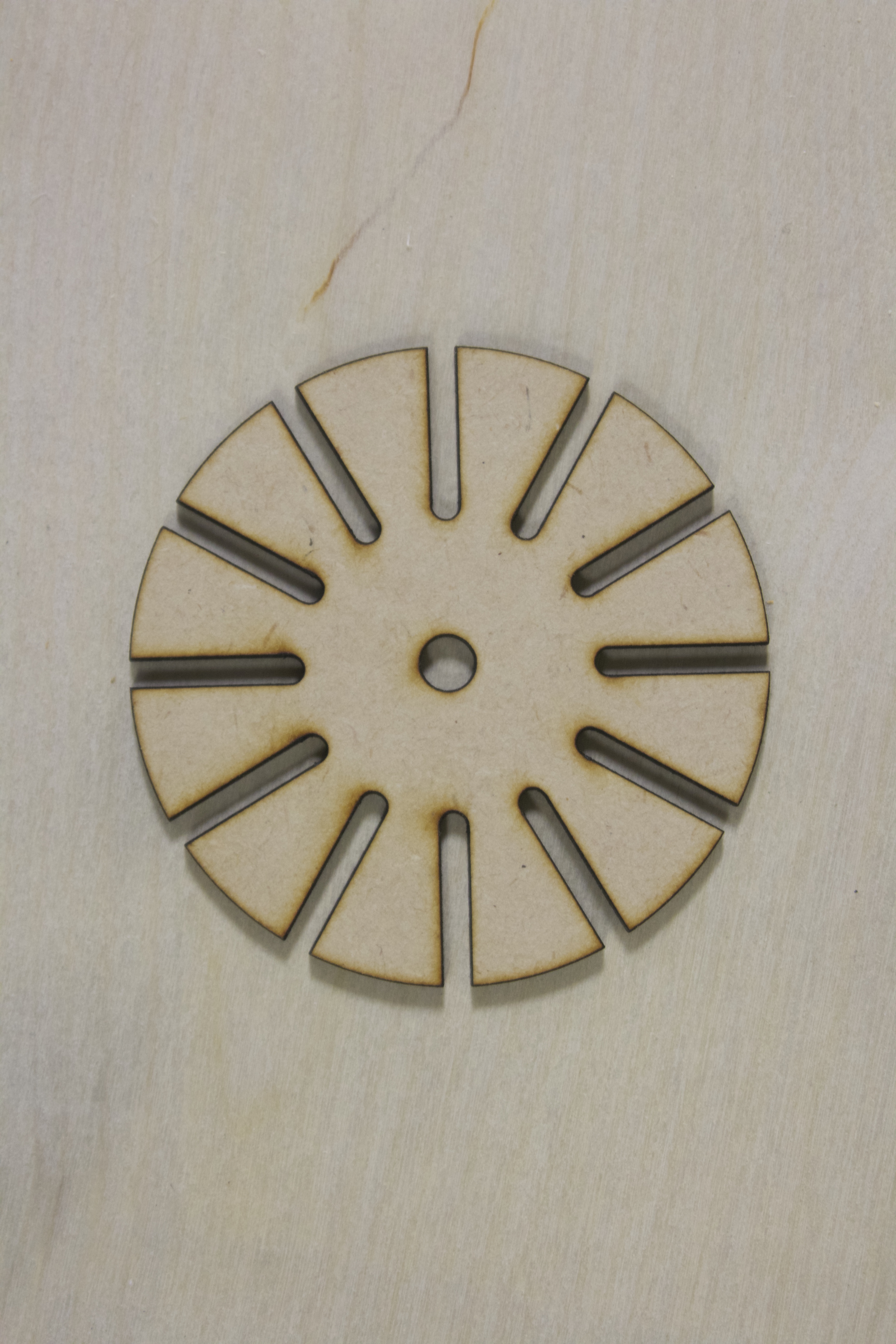
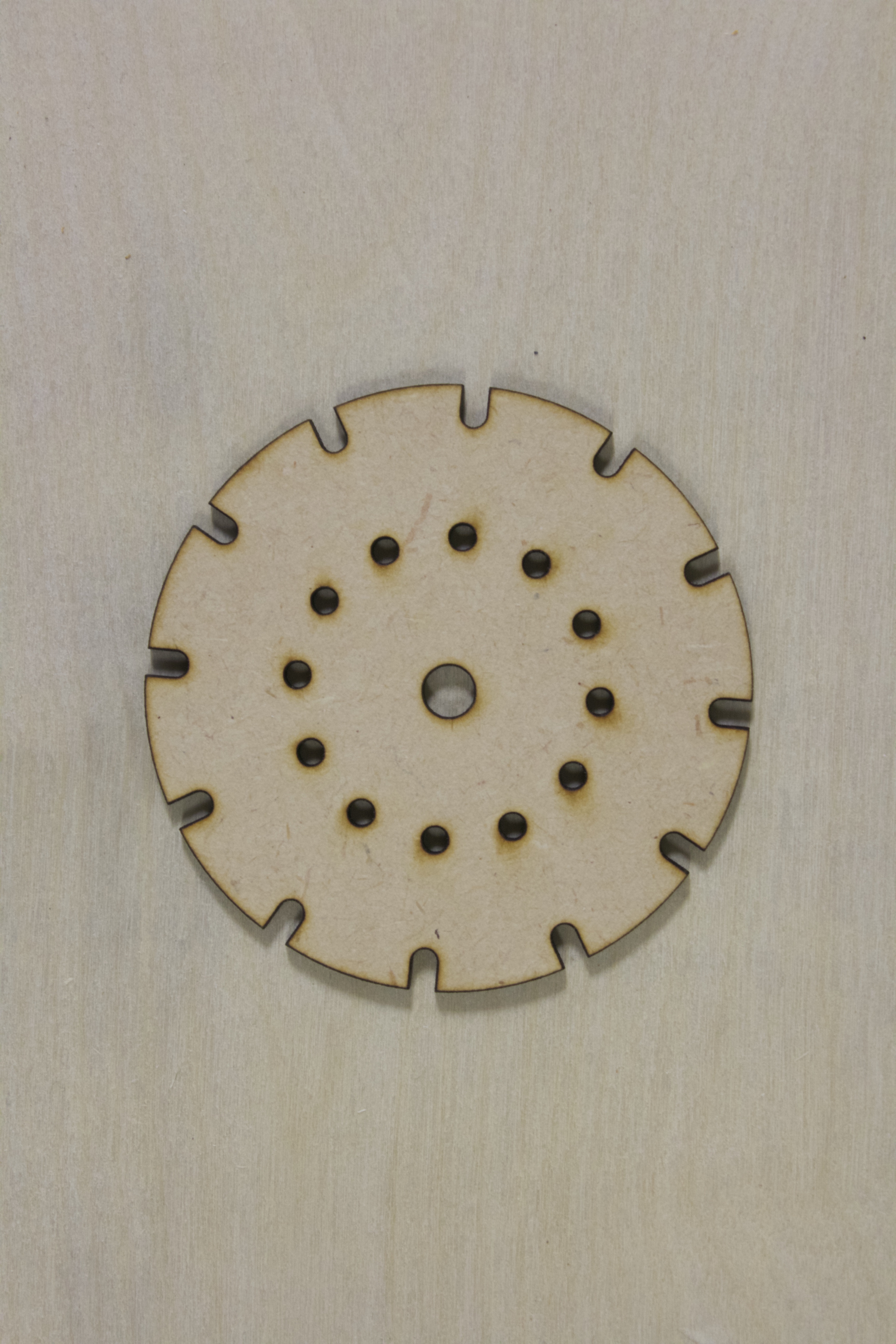
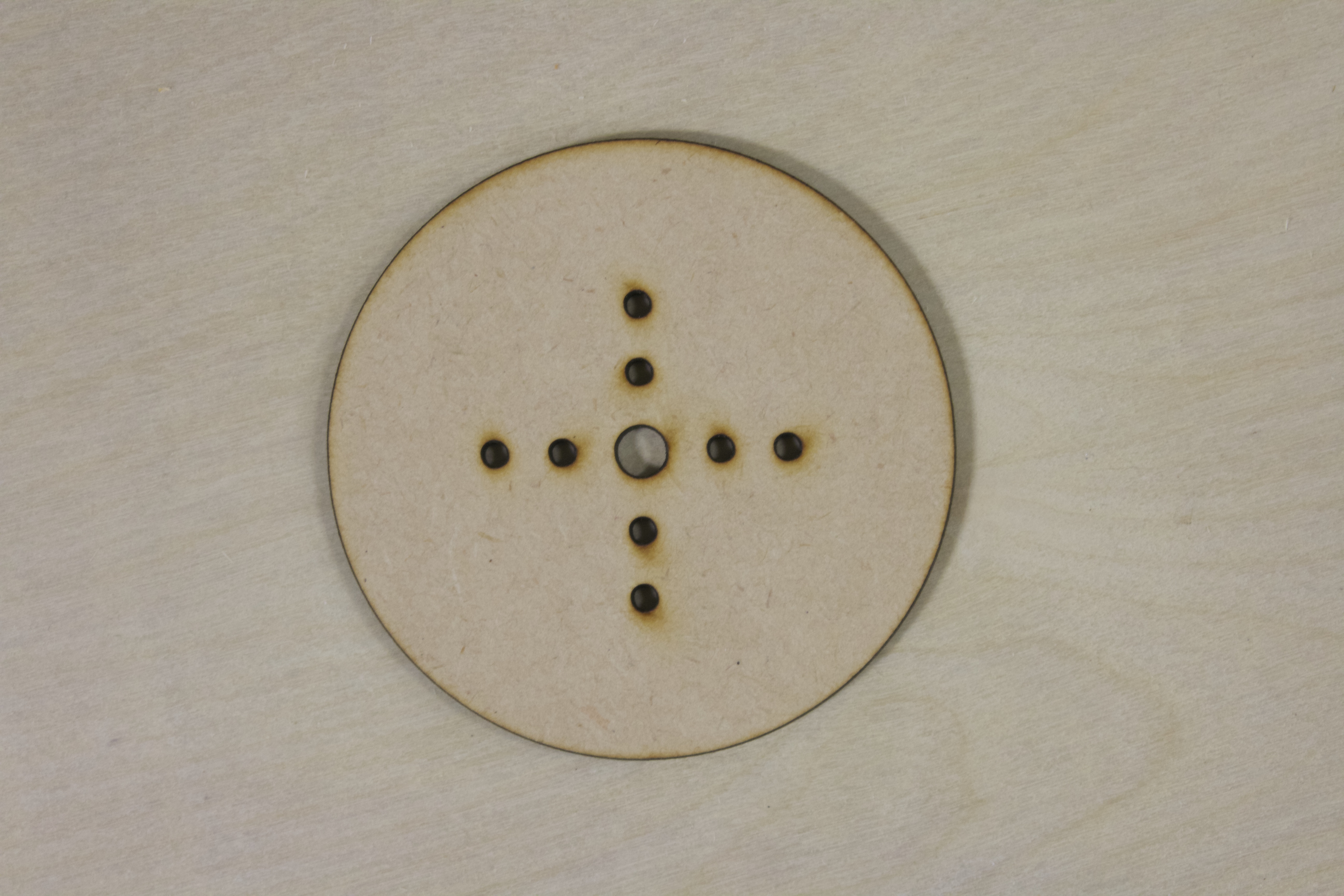
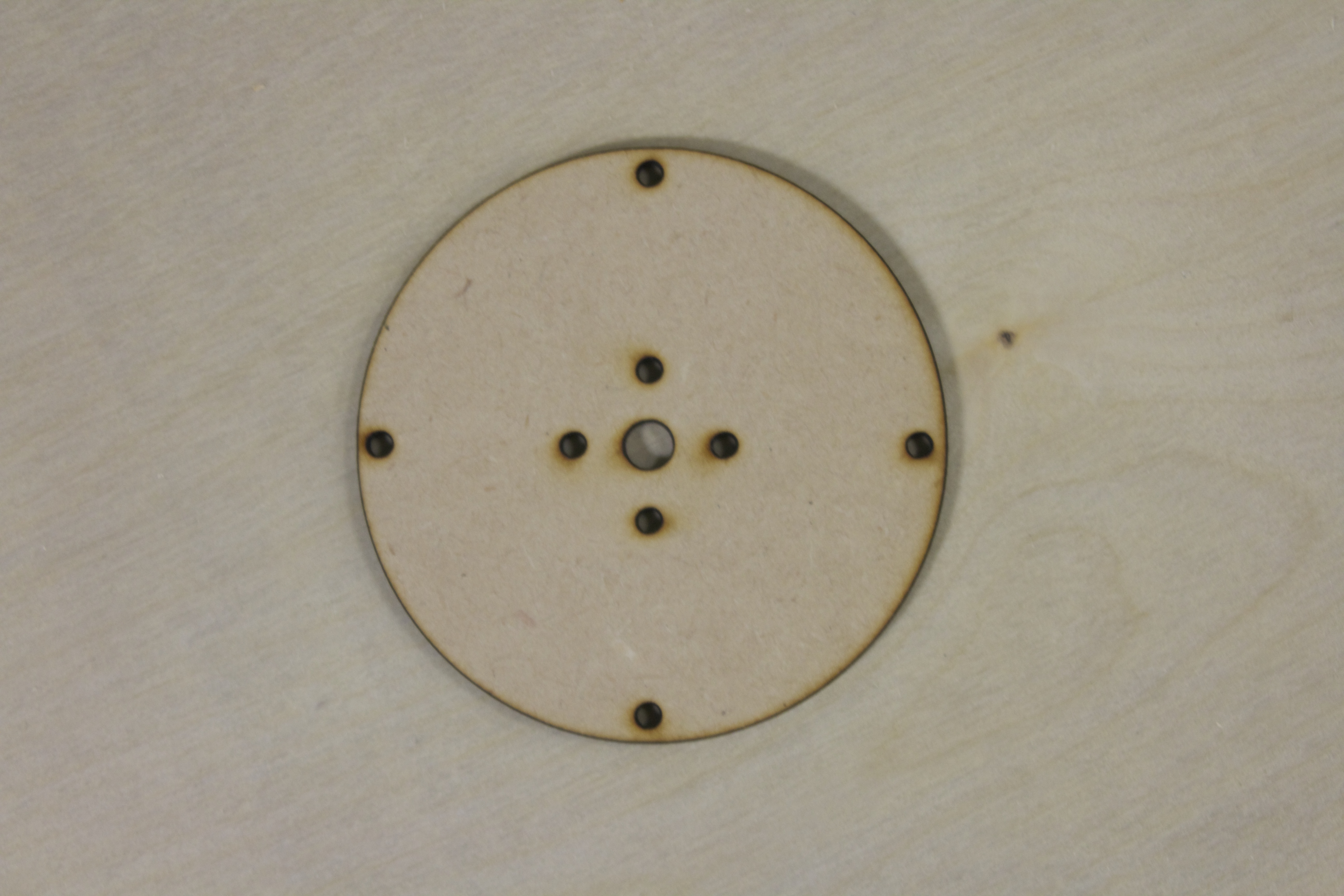
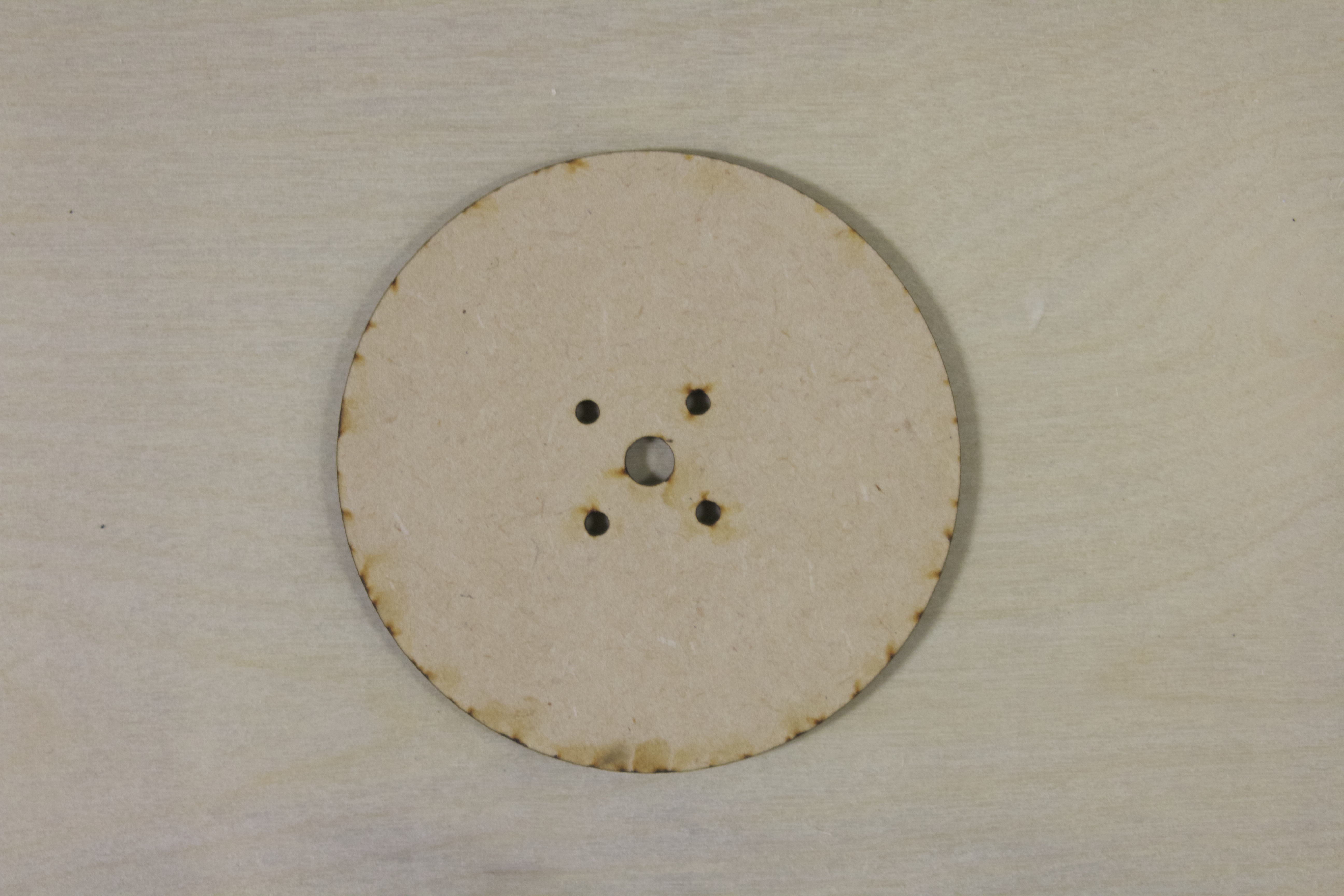
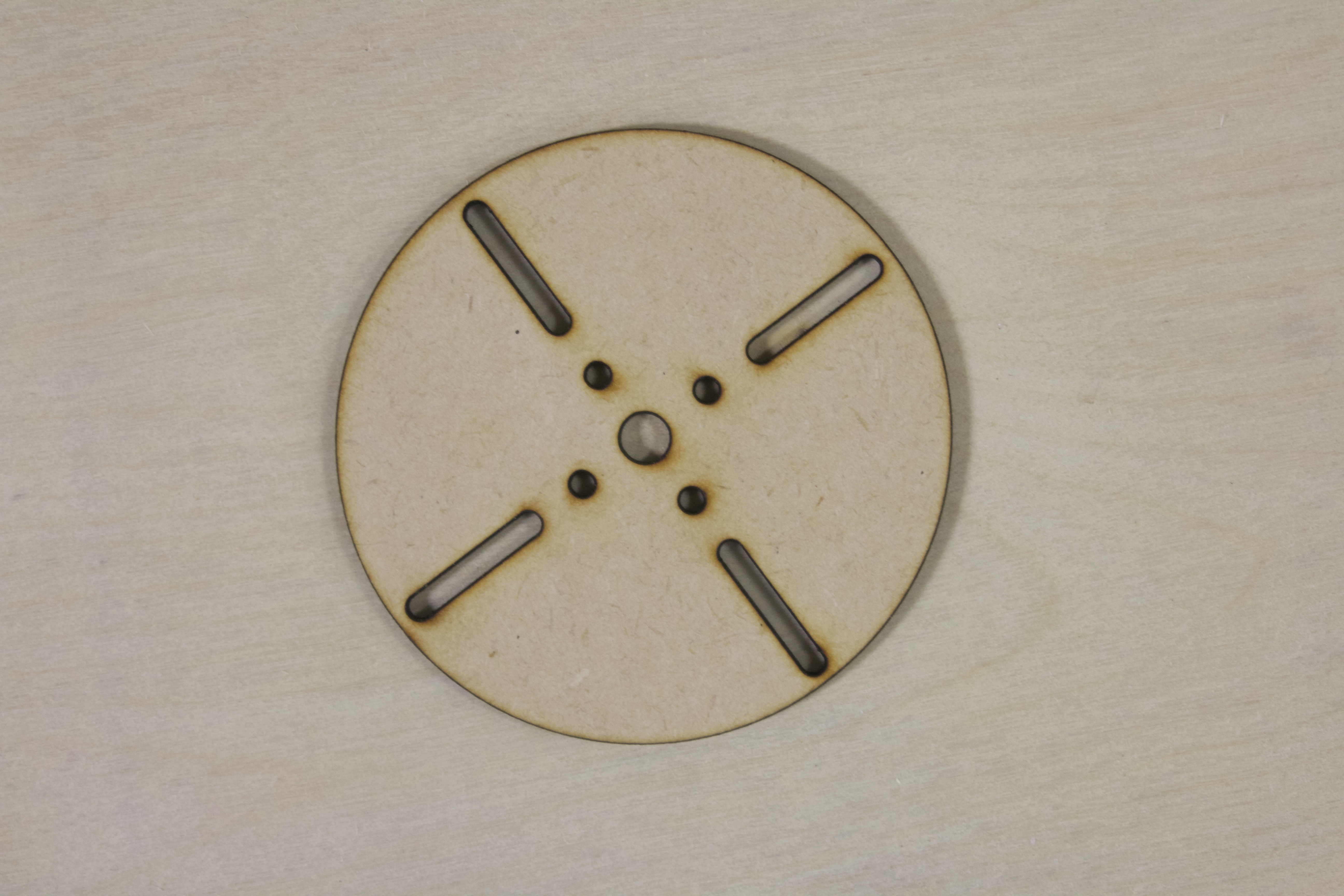
A. Open the folder in “Lamp Instructable” called “Laser-Cut Pieces.” In this folder you will find all of the wooden pieces organized by assembly. The “bottom assembly” is the lowest assembly of wood pieces on the lamp, the “middle assembly” is right below the lights and the “top assembly” is above the lights. This is the part the lamp shade attaches to.
B. In these folders I have a DXF file and a AI file (Adobe Illustrator) for each wooden piece. This is just in case your laser cutter does not accept one of the file types.
C. Once you have gathered all of the files, cut them out and set them to the side for assembly later.
D. Side note: Depending on your laser cutter you may have to scale these files to the correct size if they are uploaded in millimeters. To do this click the scale function on your software and multiply X and Y by 25.4. This scales it from Millimeters to inches.
Coding the LED's
A. First thing you do is assemble the lights with the Trinket. You will need the 2 NeoPixel rings, the Adafruit Trinket, some wire, and a soldering iron.
B. The diagram below shows where each wire needs to get soldered to. Make sure that you have at least 8 inches of wire in between the 2 NeoPixel rings. This is so you can put one on the top and the bottom of the light fixture.
C. Once you have the lights assembled upload any code onto the Trinket that will make the lights go. (I used the "strandtest" in the examples folder of the Adafruit library).
D. If you need help:
How To Solder: https://learn.sparkfun.com/tutorials/how-to-solde...
Using Adafruit NeoPixels: https://learn.adafruit.com/adafruit-neopixel-uberguide/overview
Using Adafruit Trinket with Arduino IDE: https://learn.adafruit.com/introducing-trinket?view=all
Completing Bottom Assembly
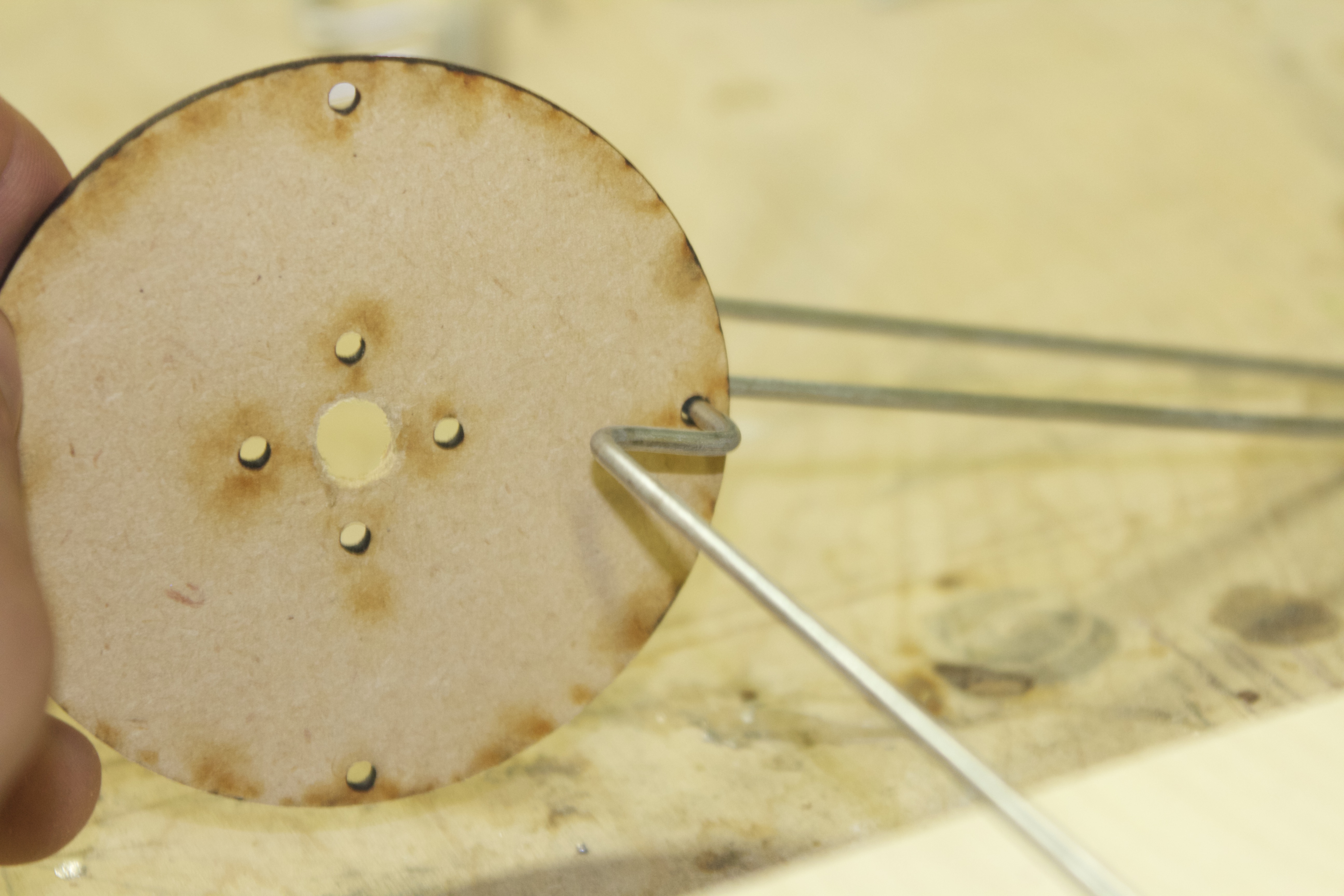
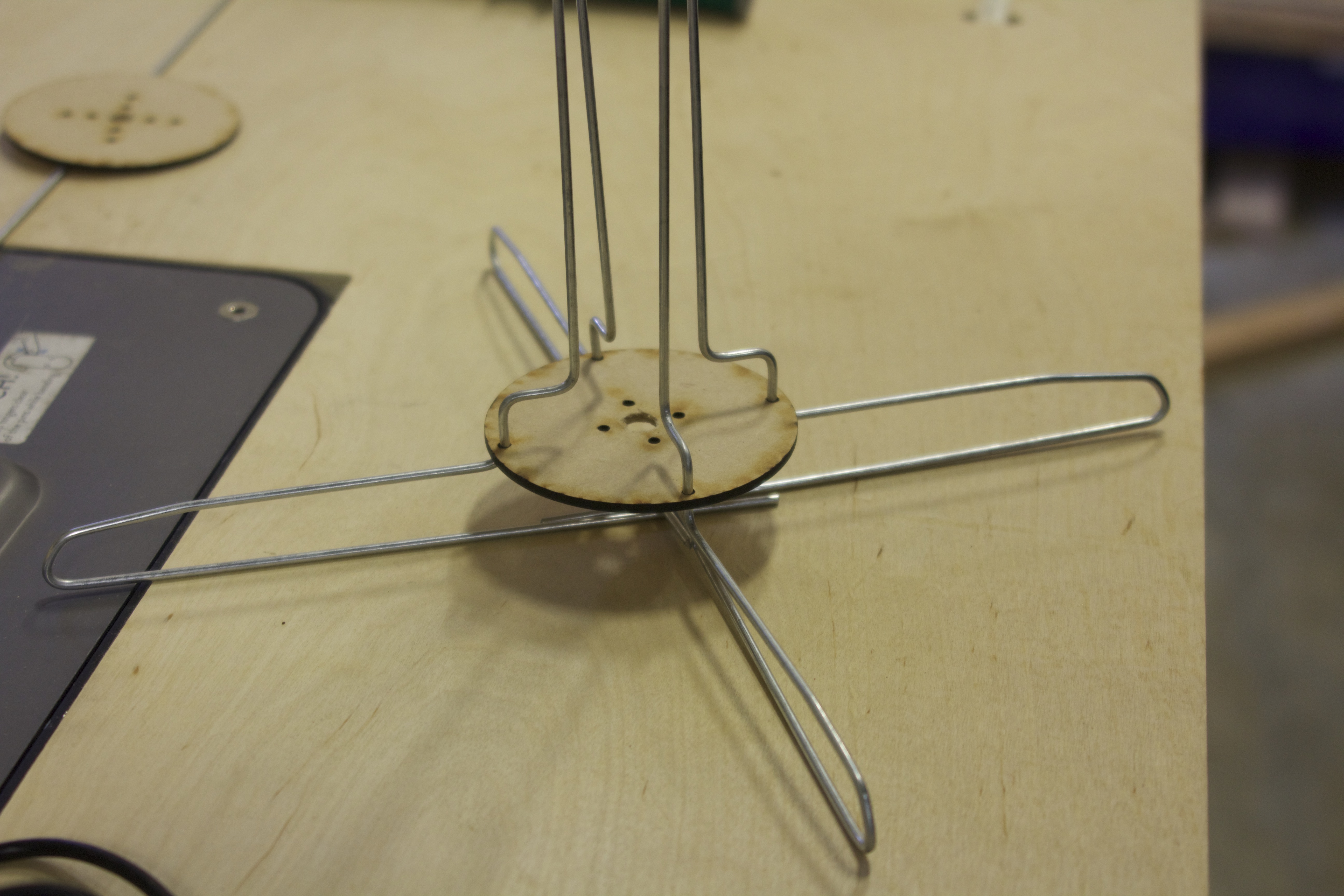
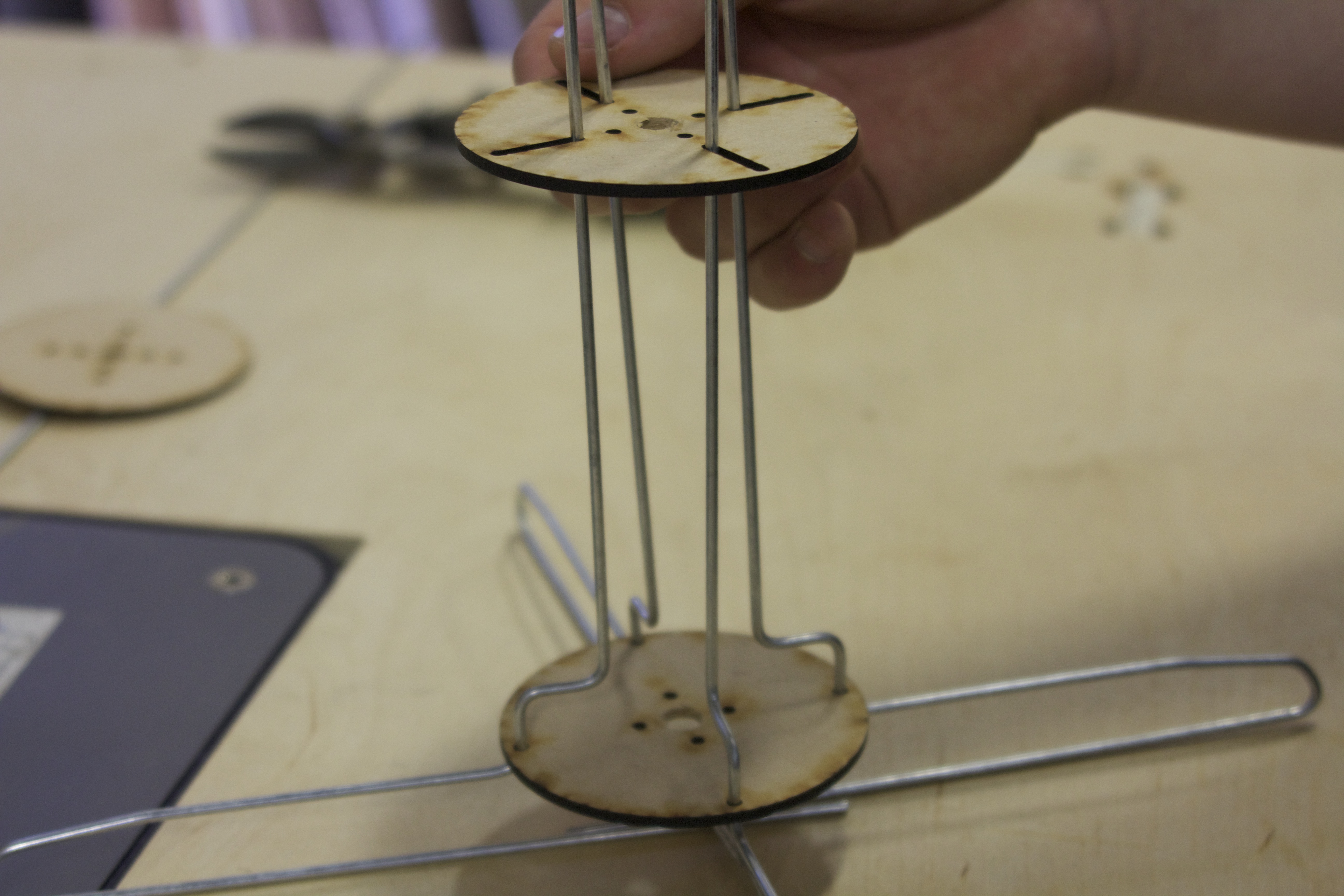
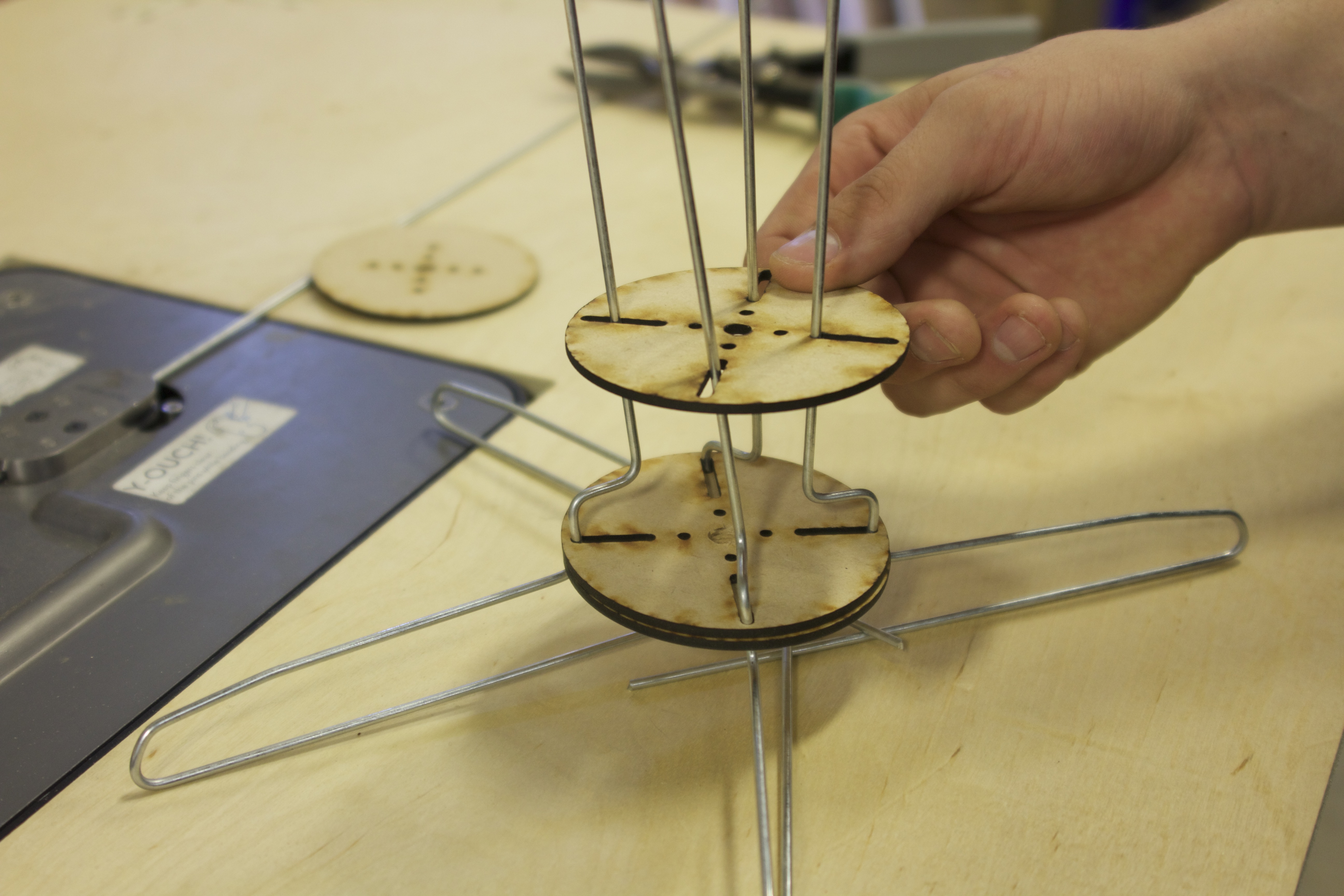
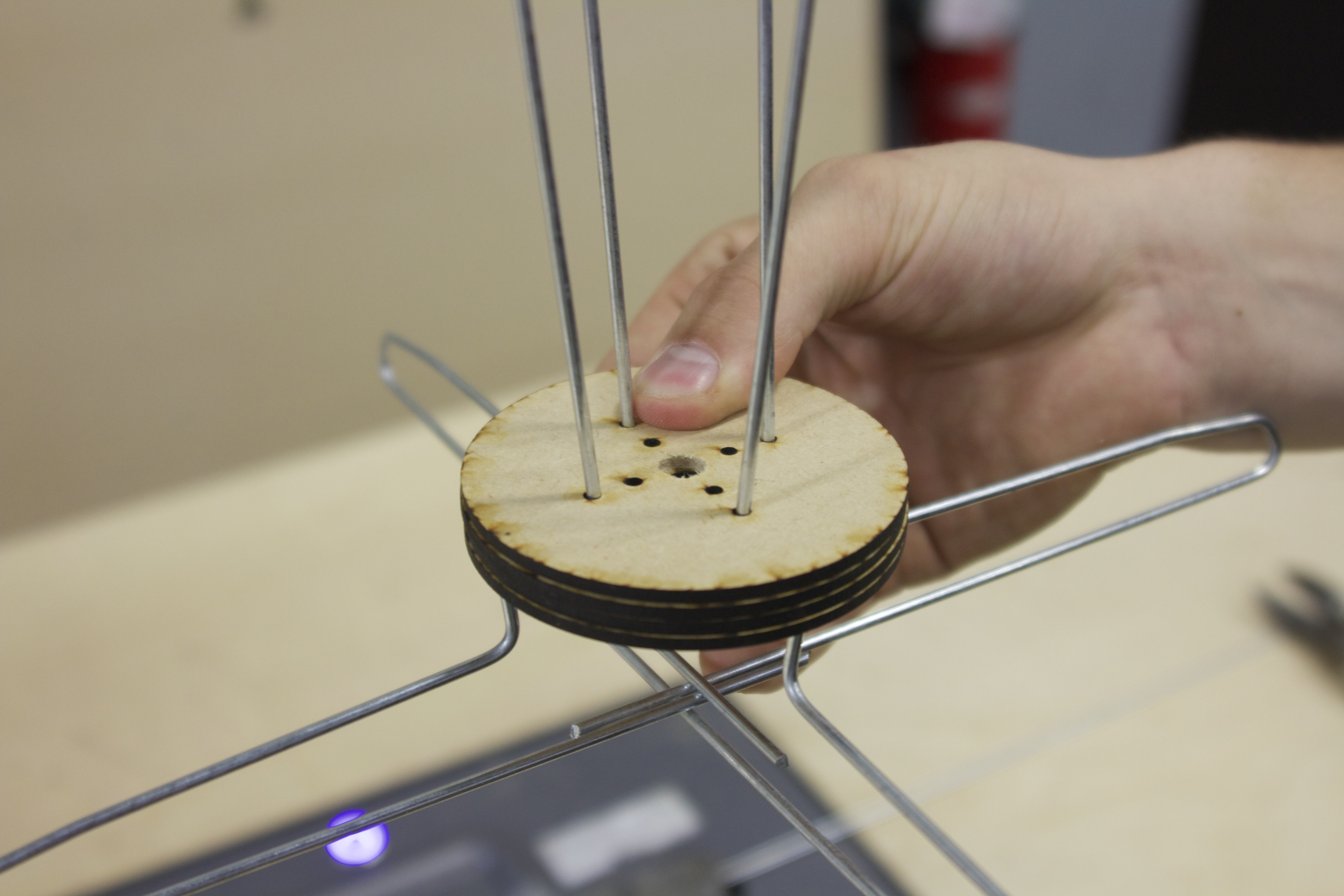
A. Start with the “Outer Lamp Post” and the “Bottom Assembly” wooden pieces.
B. Slide the “Outer Lamp Post” pieces into the “Bottom” piece of the “Bottom Assembly” wooden pieces. Once you have done this you will have something that looks like the picture below:
C. Hot glue the “Layer 2, Layer 3, and layer 4” pieces together so all of the holes line up. Slide the 3 layer assembly onto the 4 “Outer lamp Post” wires. The wires go into the outside 4 holes of the assembly.
D. Slide these pieces all the way to the bottom until the two 90 degree bends go into the channels on the laser cut wood. This should turn the 4 “Outer Lamp Post” pieces in the correct direction and keep them from moving.
E. Hot glue “Layer 1” to “Layer 2, 3, and 4.” You Now have a completed “bottom assembly”.
Middle Assembly and Soldering
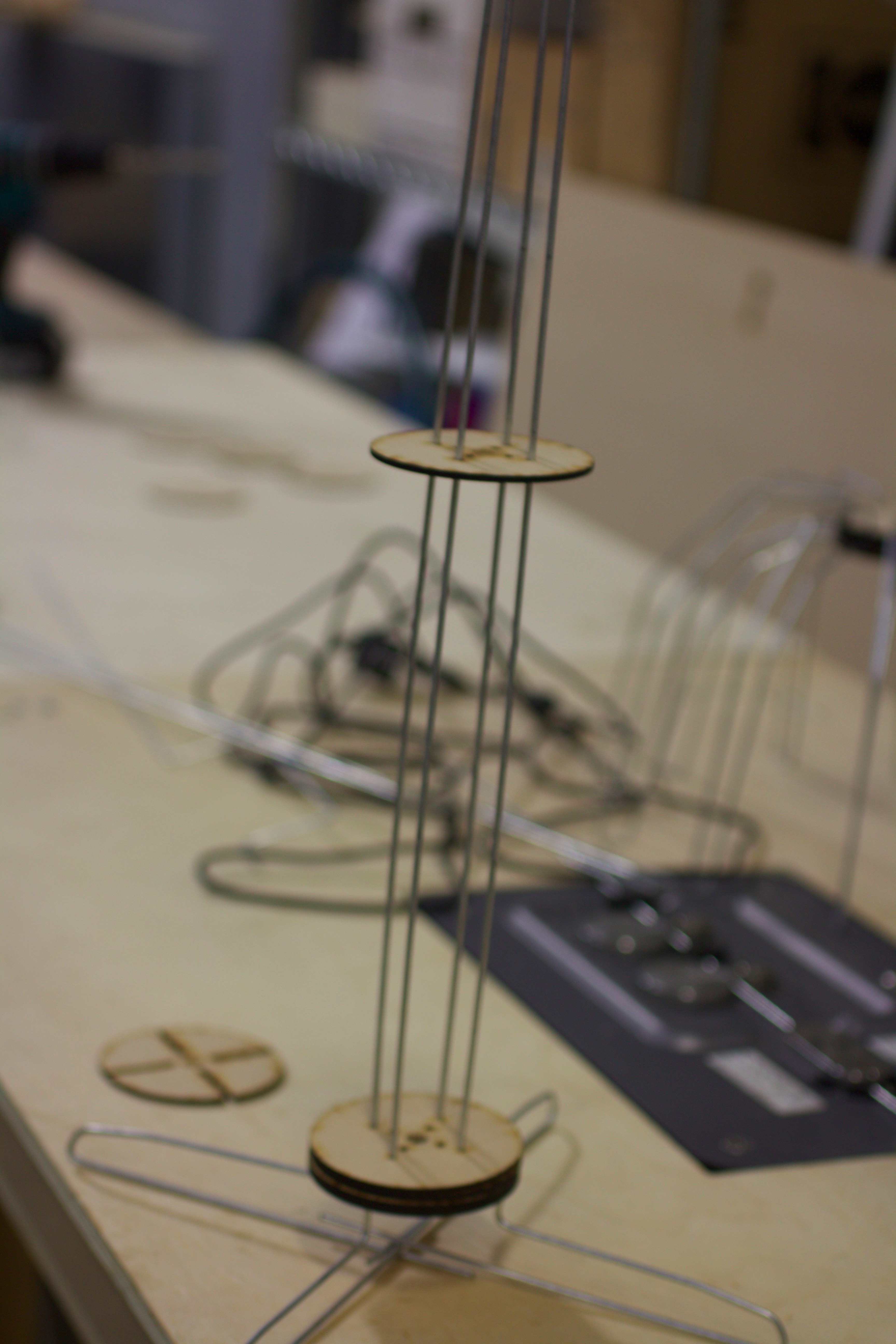
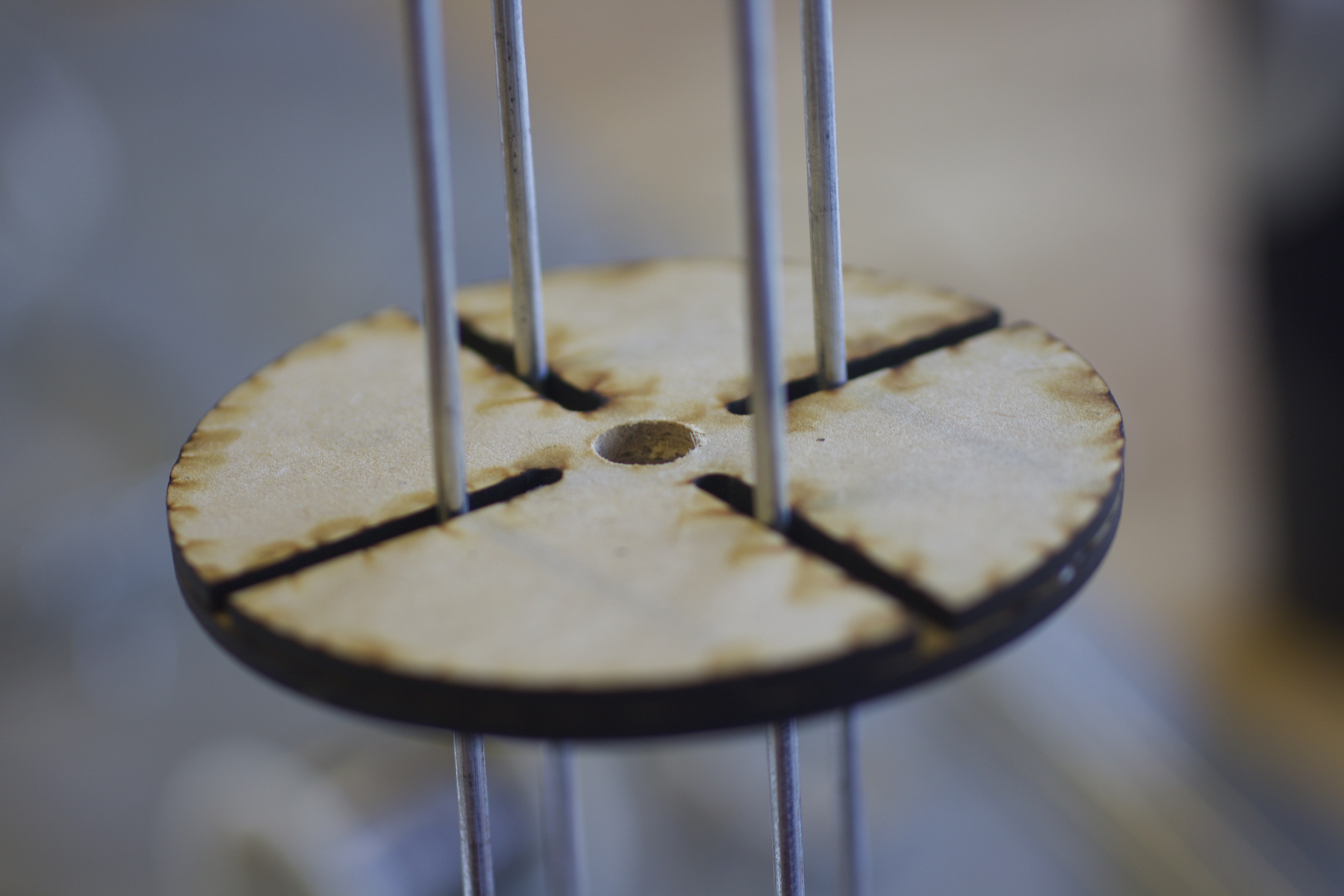
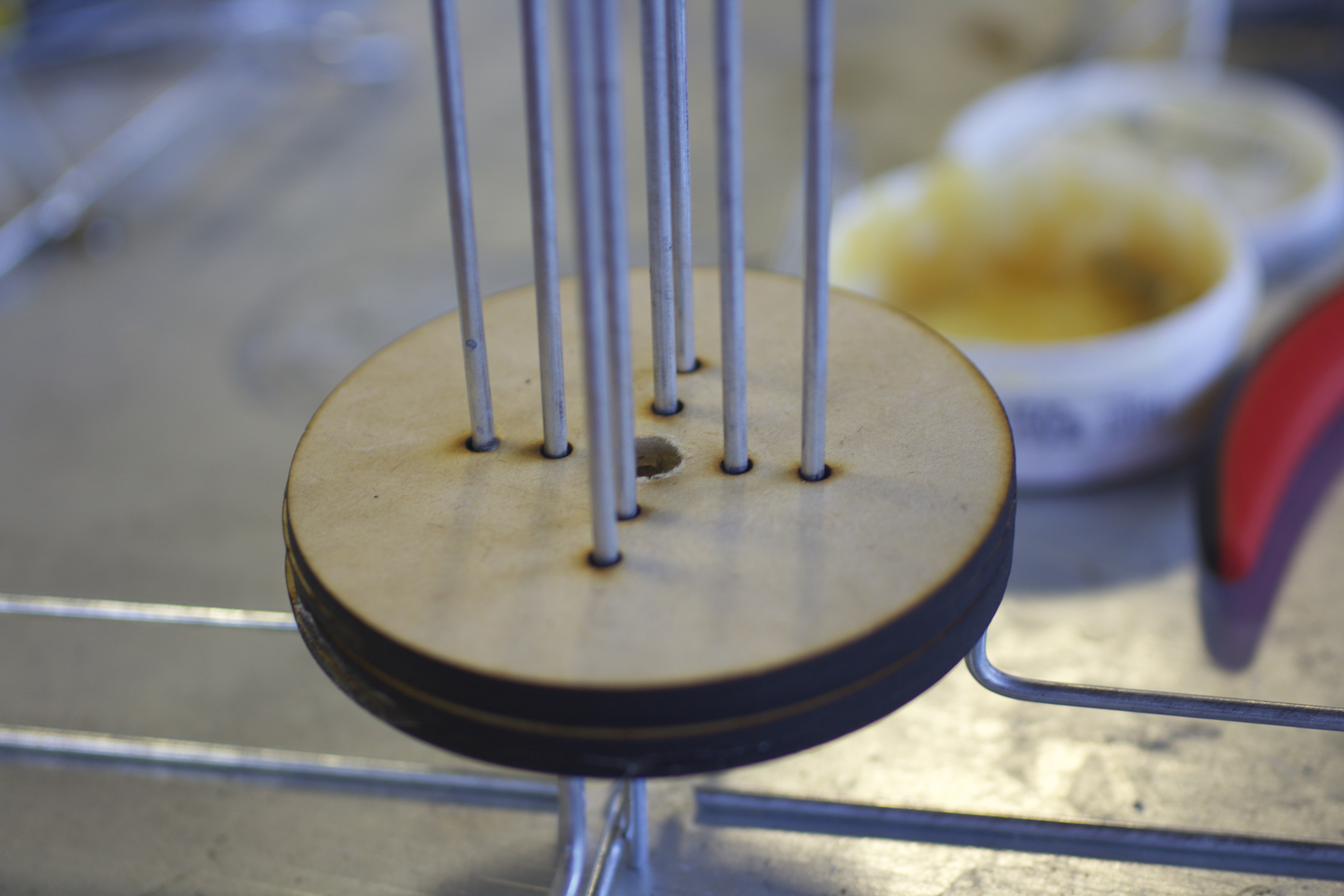
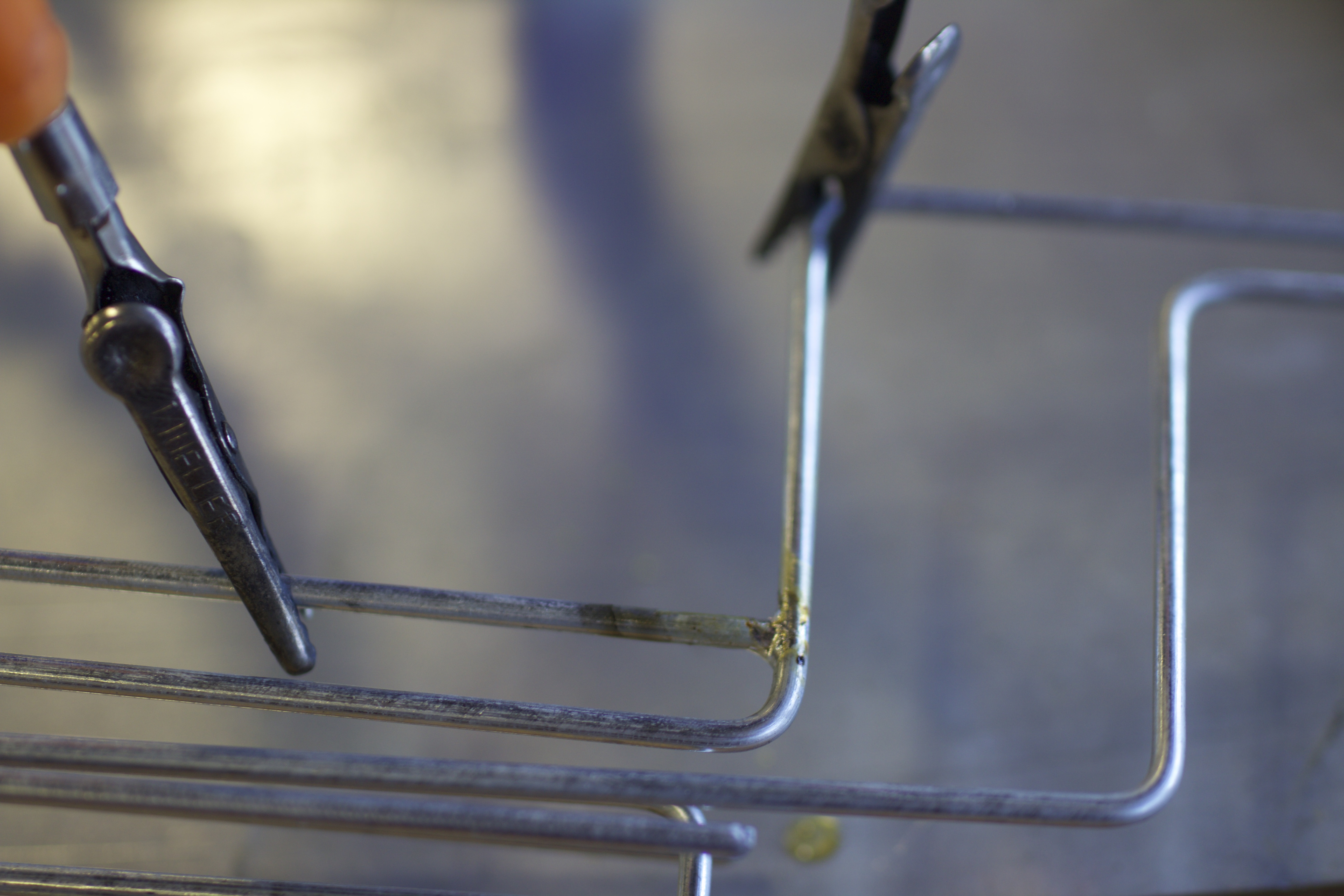
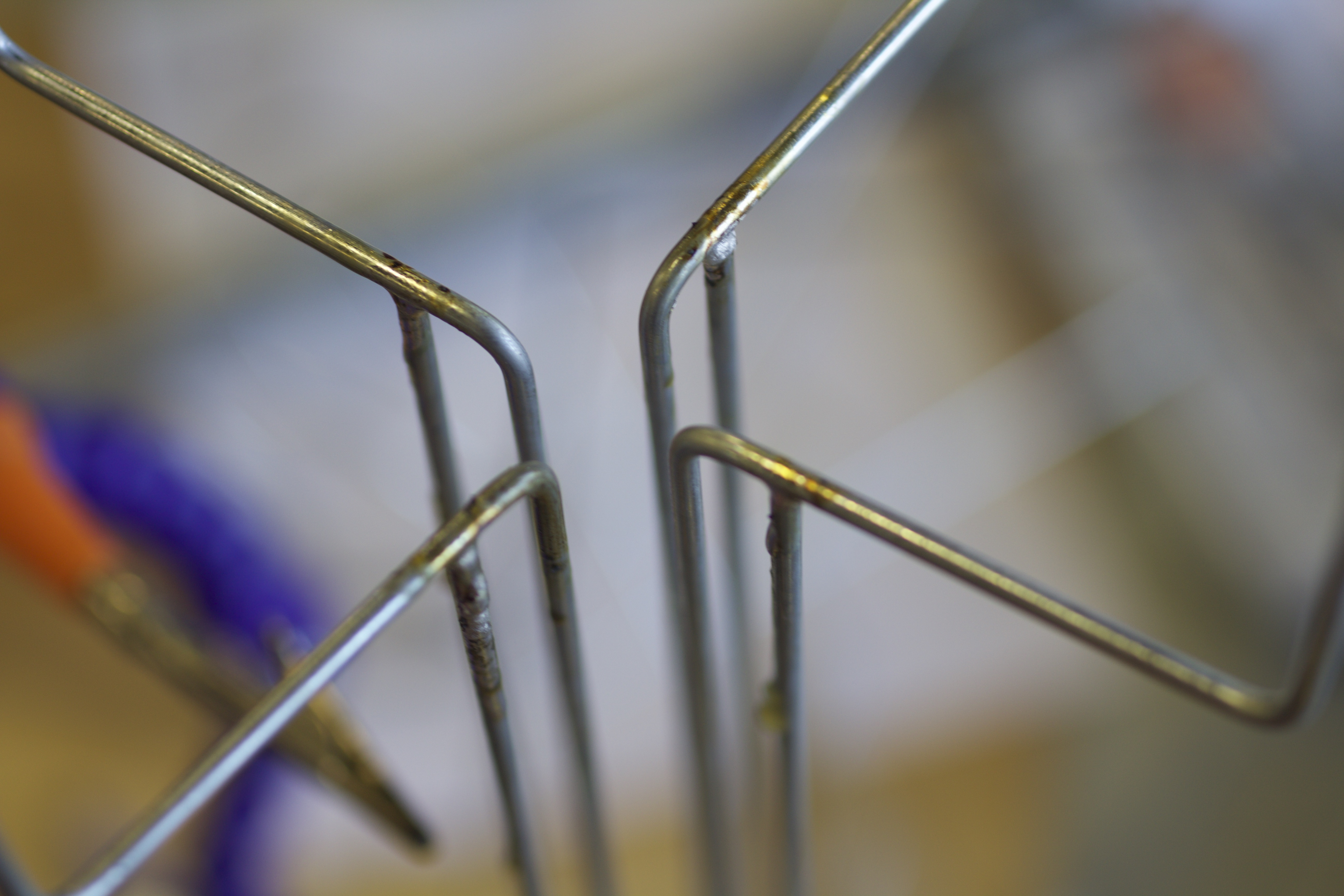
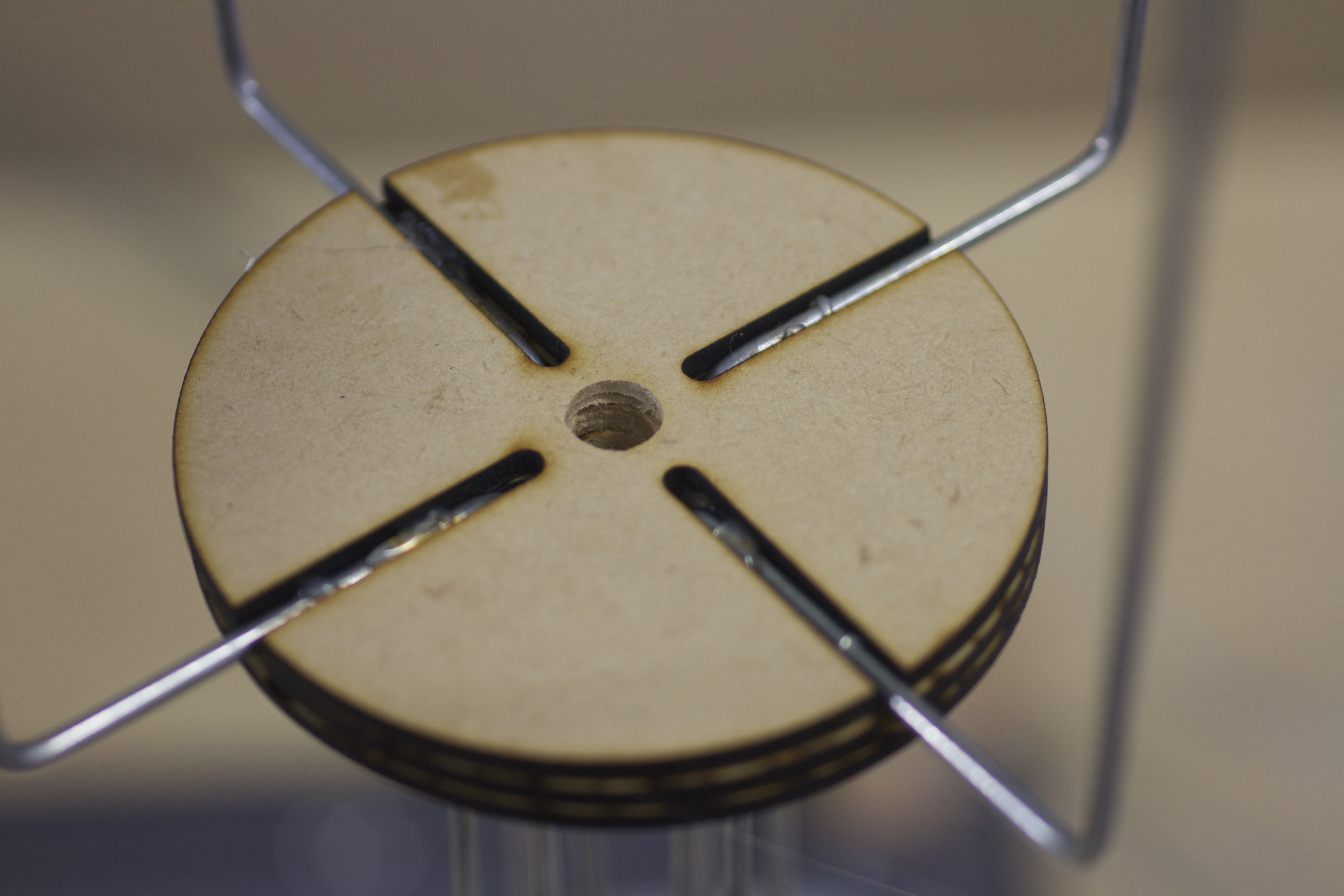
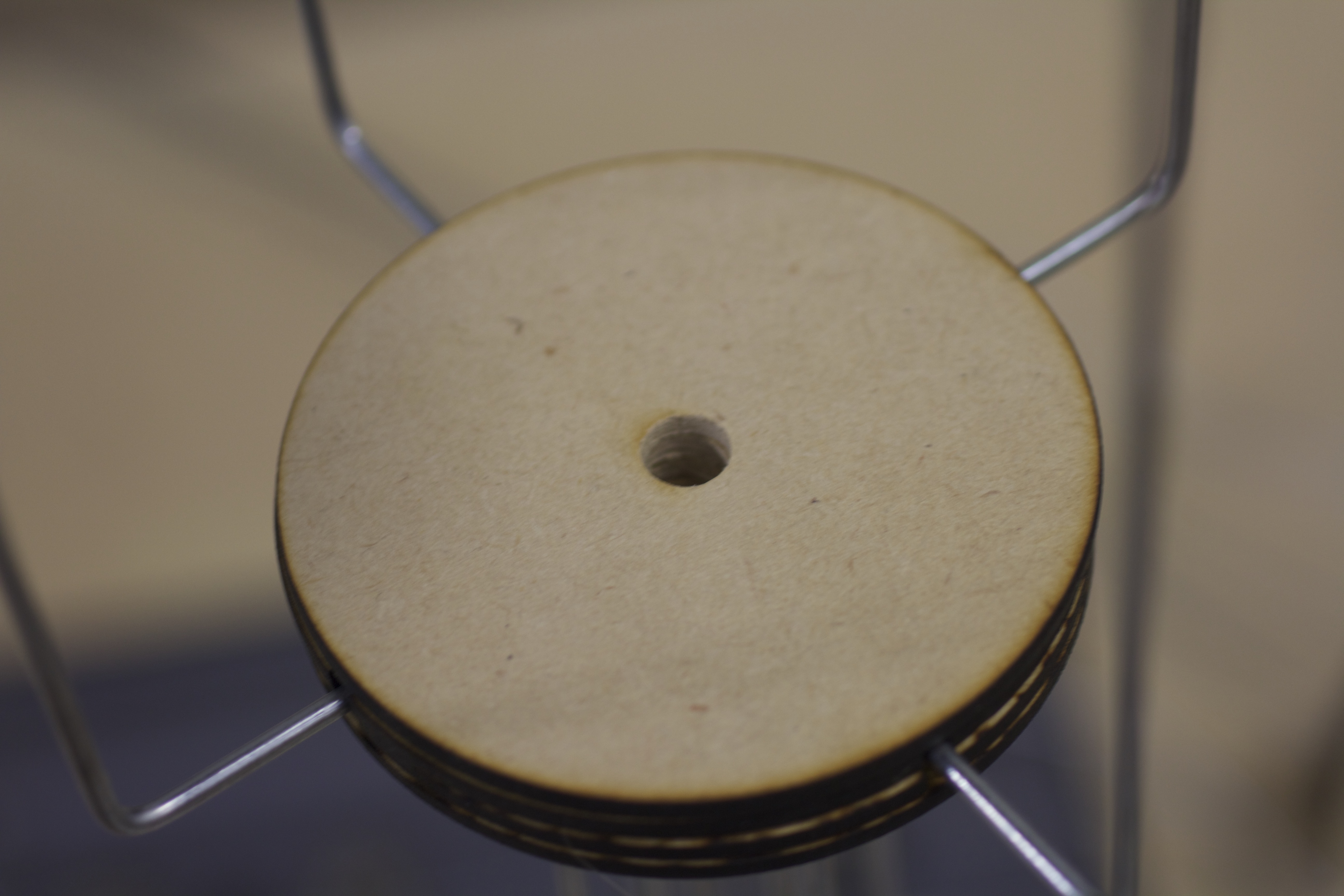
A. To start this phase take “Layer 1” from the middle assembly and slide it over the 4 “Outer Lamp Post” Wires. Make sure those 4 wires are in the farthest holes to the edge of the wooden piece. Slide this piece to the middle. This piece is primarily on right now to hold everything together while being soldered.
B. Now the 4 “Inner Lamp Post” pieces of wire are ready to go in. Slide these pieces (straight side first) into the inner 4 holes of all of the wooden pieces. These pieces of wire should be able to slide all of the way through the wooden pieces to the bottom.
C. Now you can start soldering them together. There are 4 joints that need to get soldered in total. This is where the top of the “Outer Lamp Posts” meet the bottom horizontal parts of the “Inner Lamp Posts.” When soldering, make sure the distance between the 2 lamp post wires are the same distance as the length between the holes on the wooden pieces that they go through.
D. Once soldering is complete, glue “layer 2, 3, and 4” together. This assembly will attach over the top of the solder joints and the wires will fit into the channels. Then slide “Layer 1” up and glue this piece to the bottom of the other 3 wooden pieces. The 4 wooden pieces together should cover up all of the soldering and hold all of it together. The assembly will look like this:
Completing Top Assembly
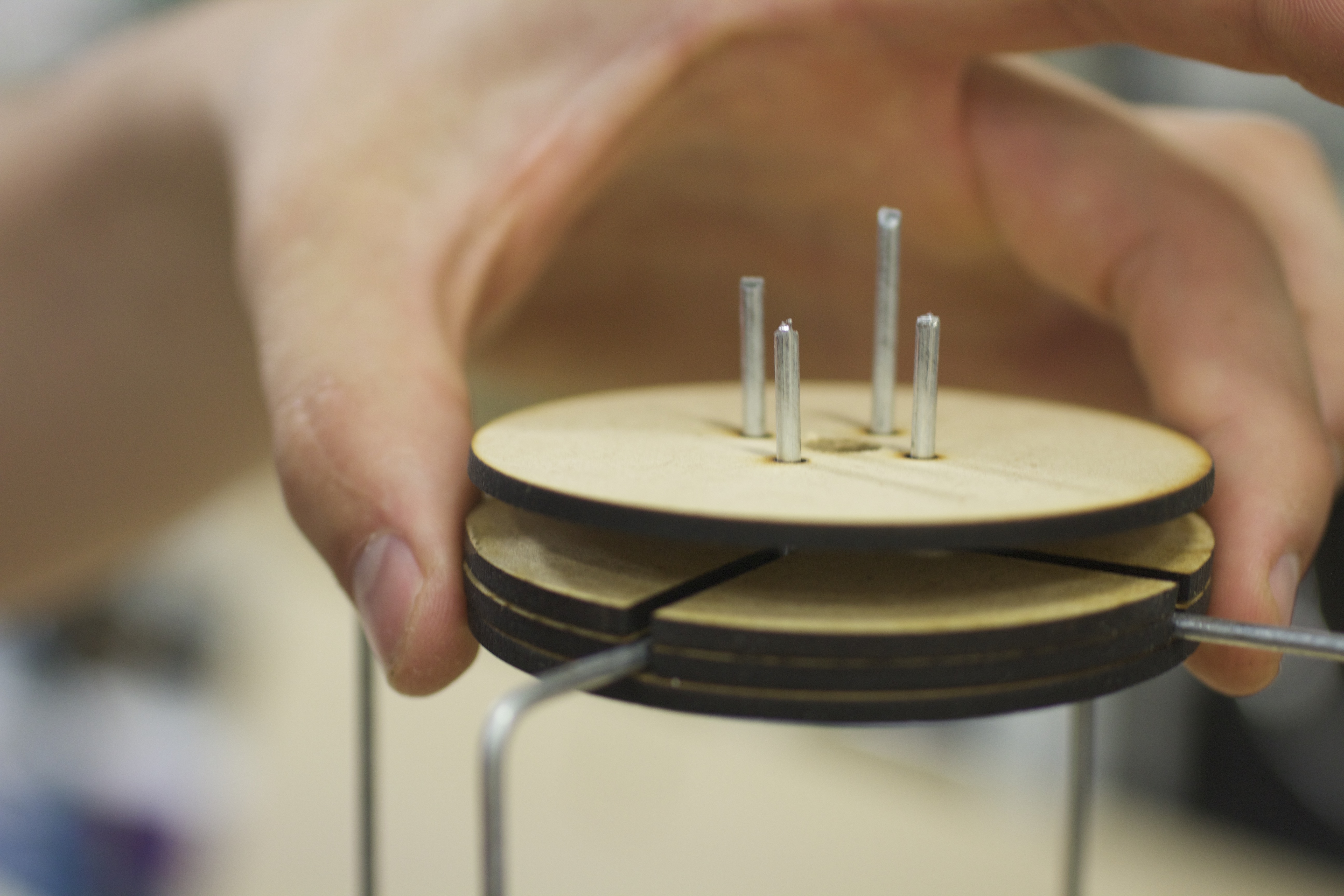
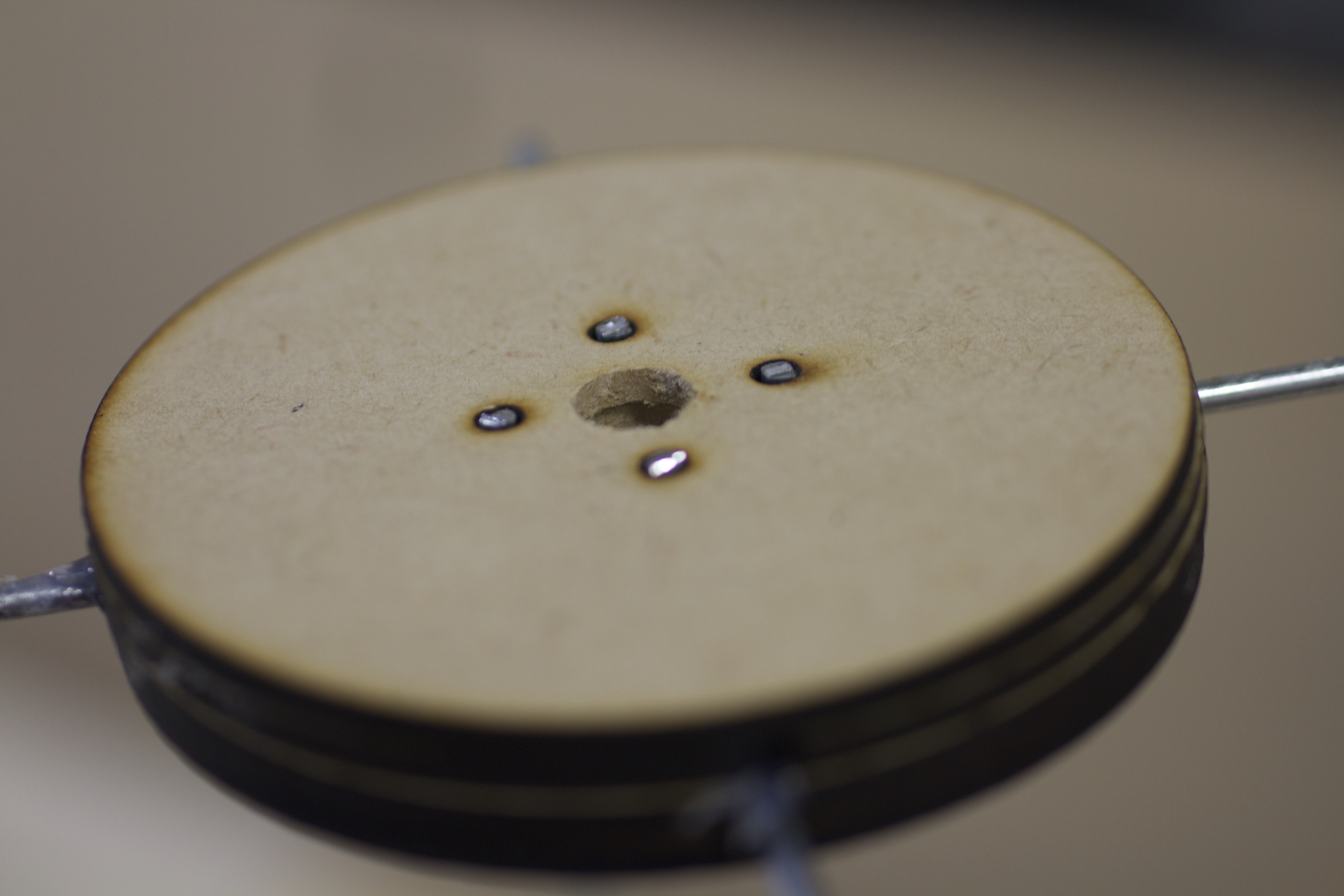
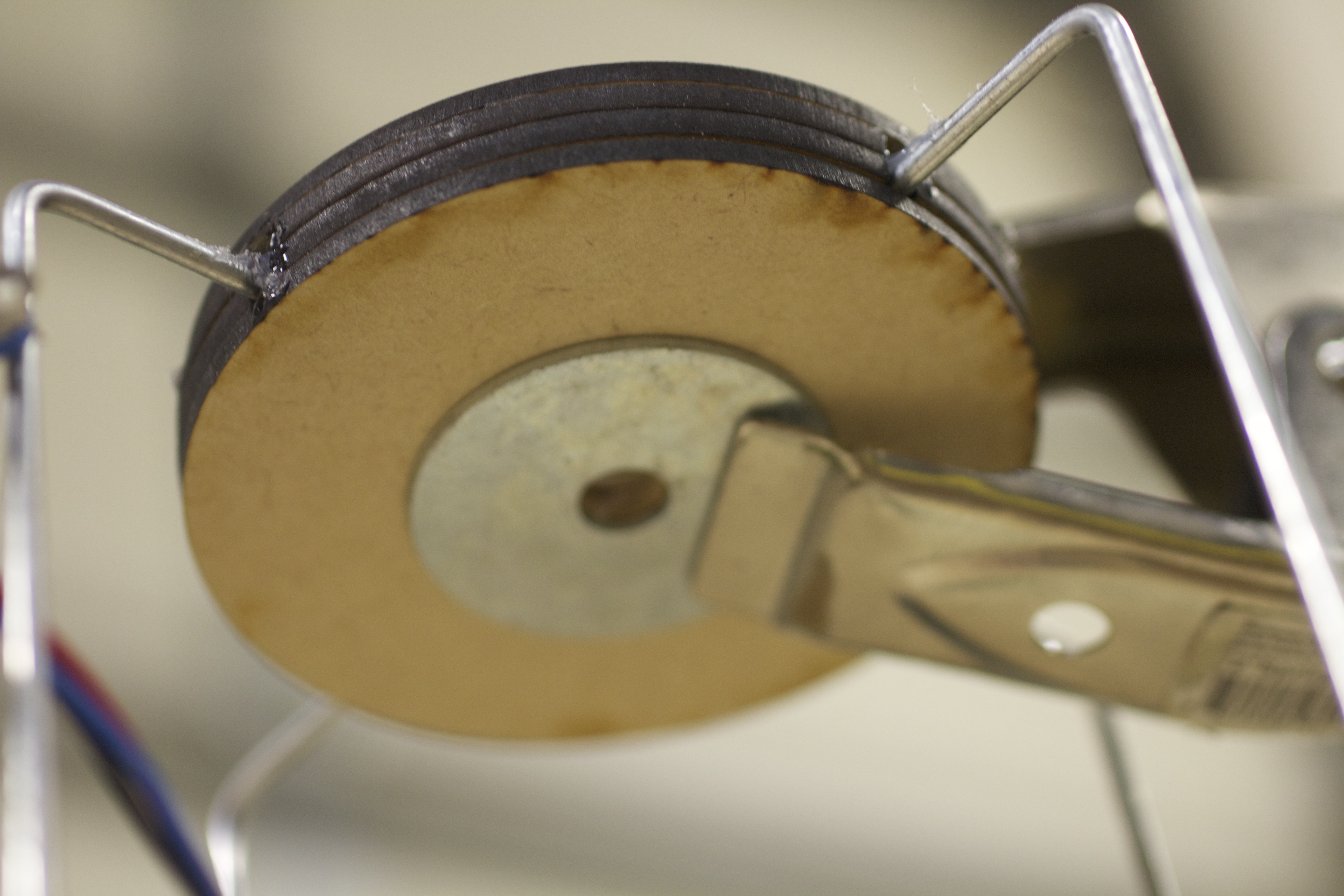
A. Start this step by gluing together “Layer 1”, “Layer 2”, and “Layer 3” from the “Top Assembly” folder. Make sure the holes line up.
B. Once the glue is dry use those pieces as the lower part of the assembly. Then take “layer 4”, put the 4 pieces of wire through the holes, and glue that to the bottom 3 layers.
White Cloth Shade
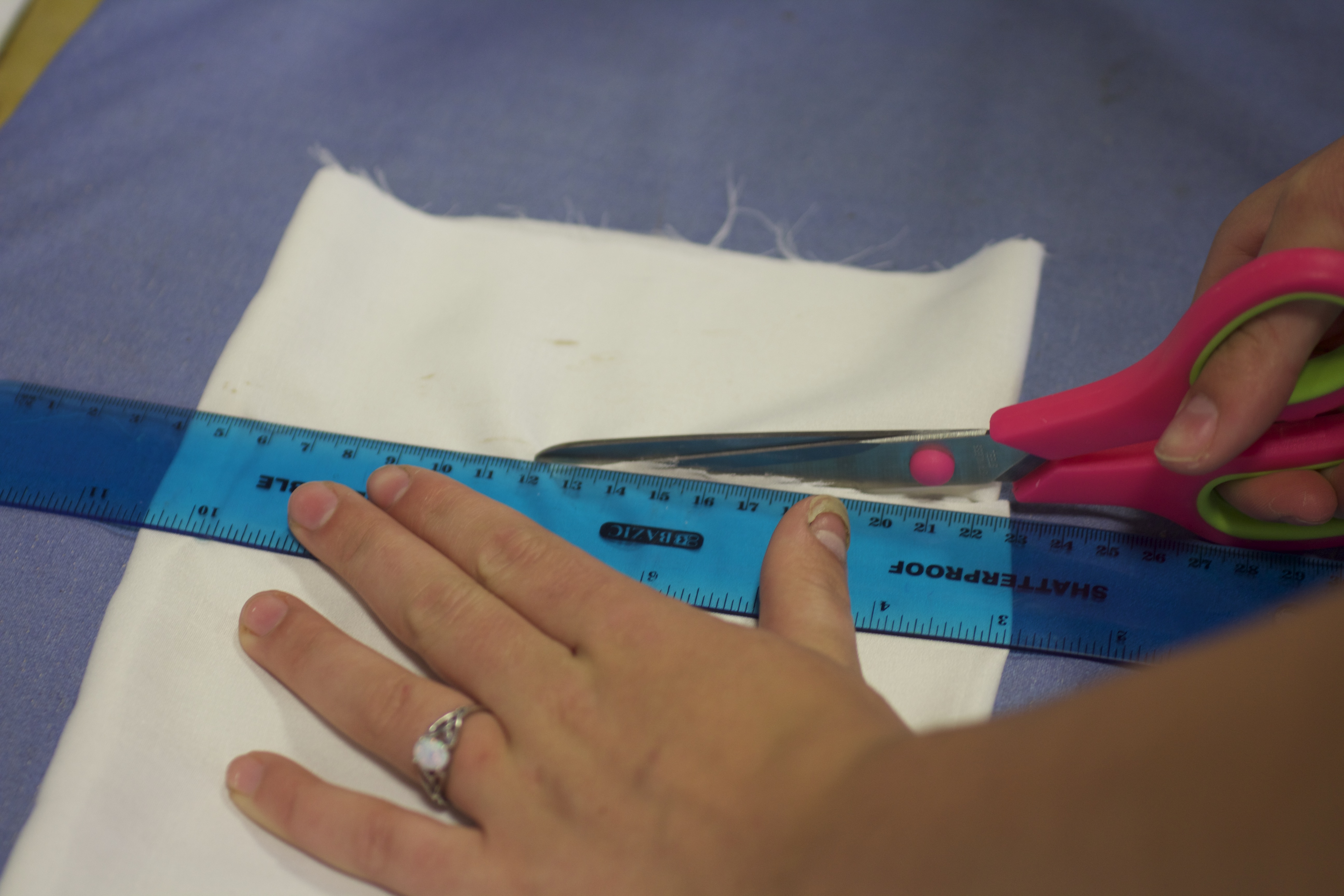
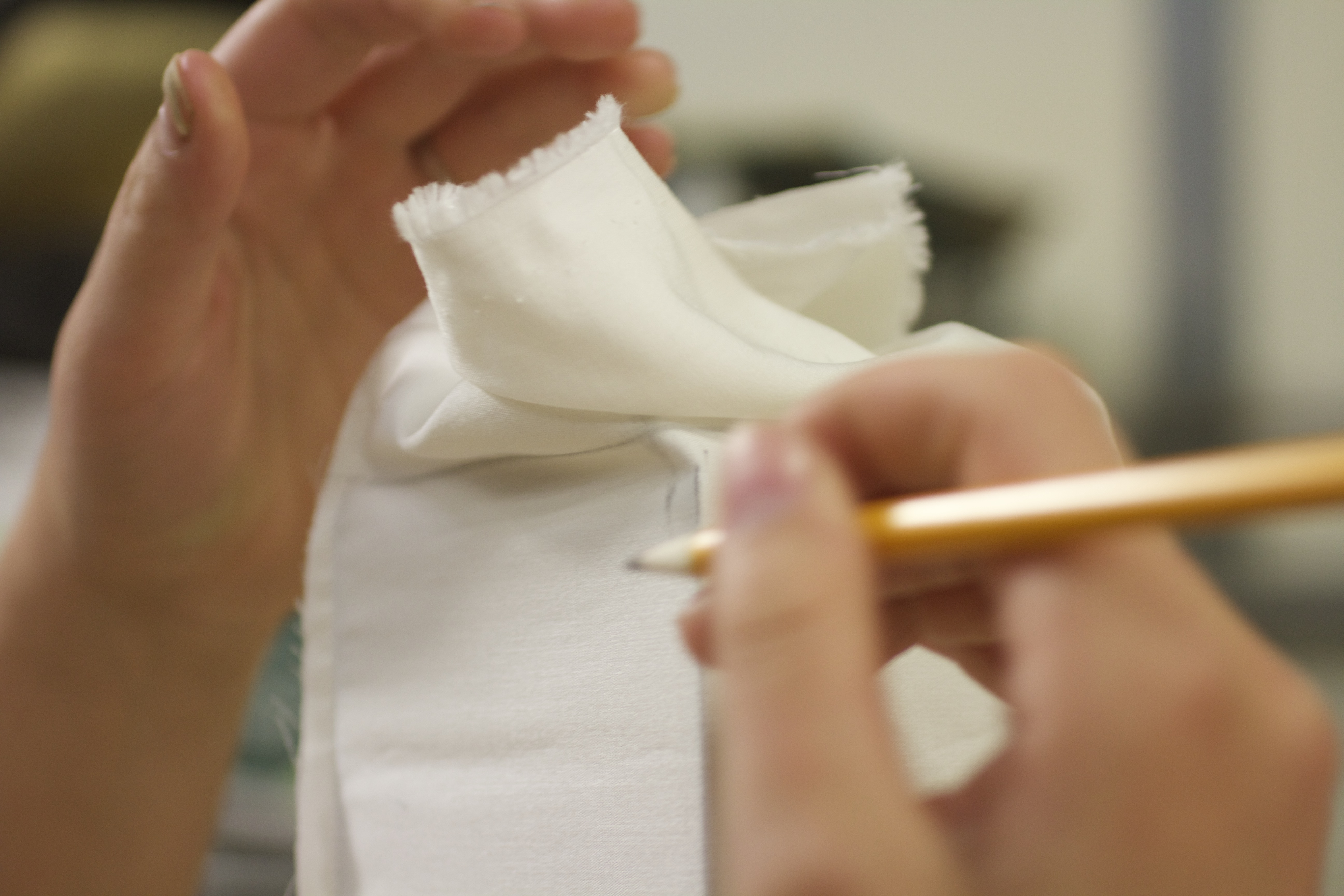
A. Measure the outside of the 4 upper wire bent pieces that are meant to hold the light (I used a piece of string.)
B. Use this piece of string to measure out a piece of cloth that is the same length. Make sure that the cloth is at least 12 inches wide. Give the line an extra couple millimeters for a seam. Sew it closed into a tube.
C. Once this is done put the white tube over the lamp and have the extra hanging out of the top. Use a pencil to mark where the corners need to be cut if the tube continued up.
D. Make a cut on all of these lines and then fold all of the half cut squares together to form the side of a cube. Sew the 4 parts together and then the lamp shade should fit perfectly over the “Top Assembly” and the 4 pieces of wire below it.
E. Cut a hole on the white lamp shade where the hole on the wooden pieces is. This is so that the lamp shade bolt can connect to the lamp through the cloth.
Assembling Lampshade
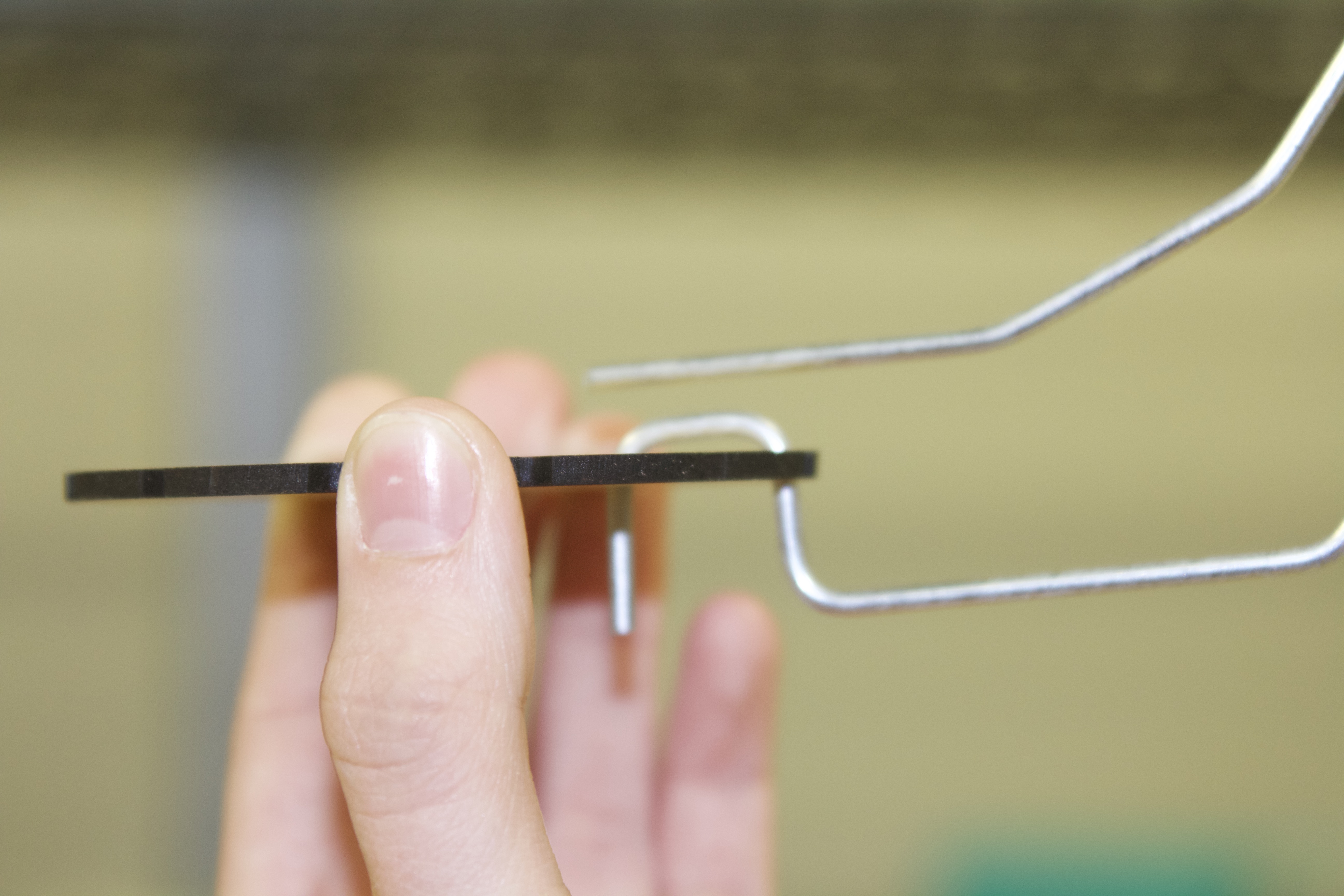
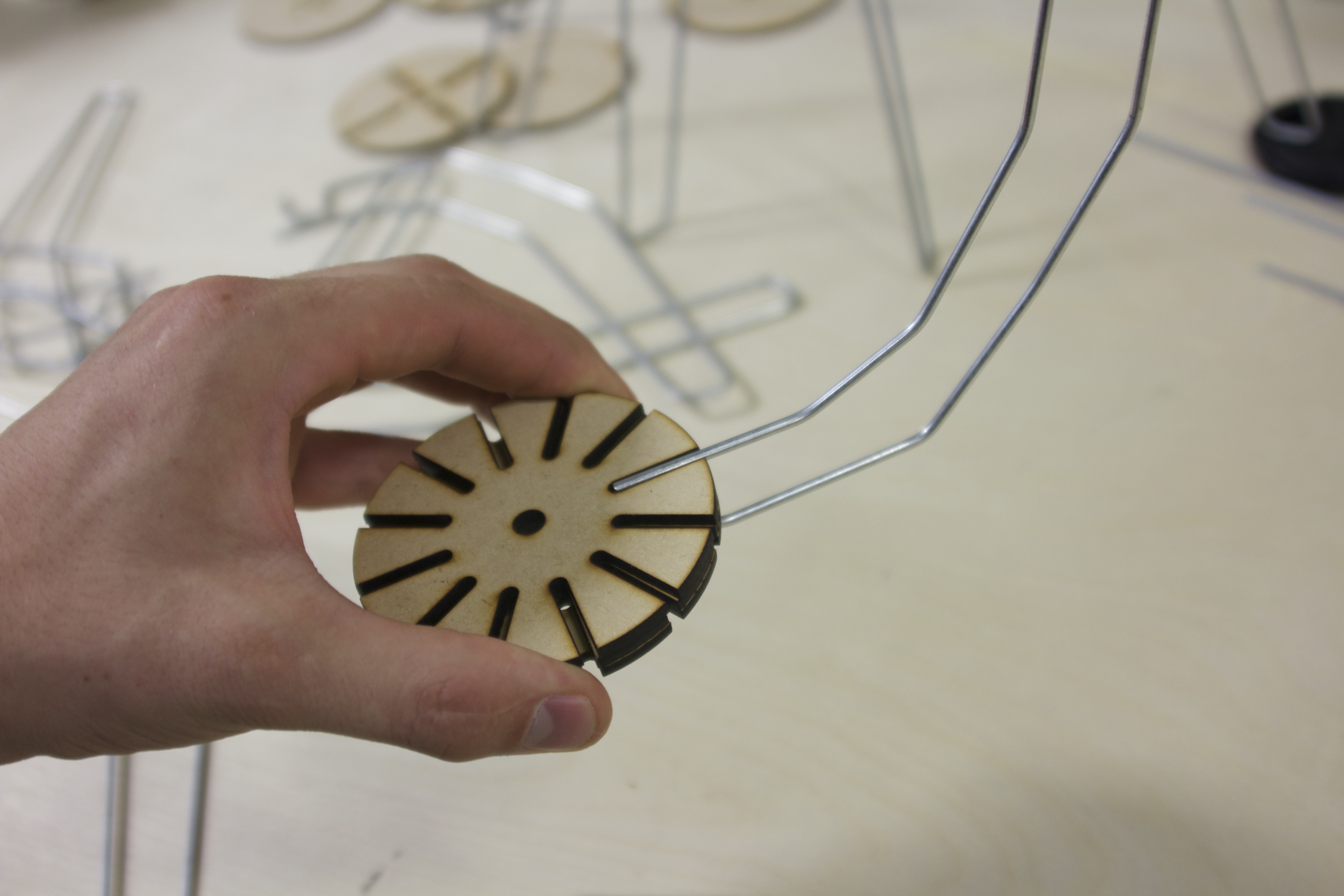
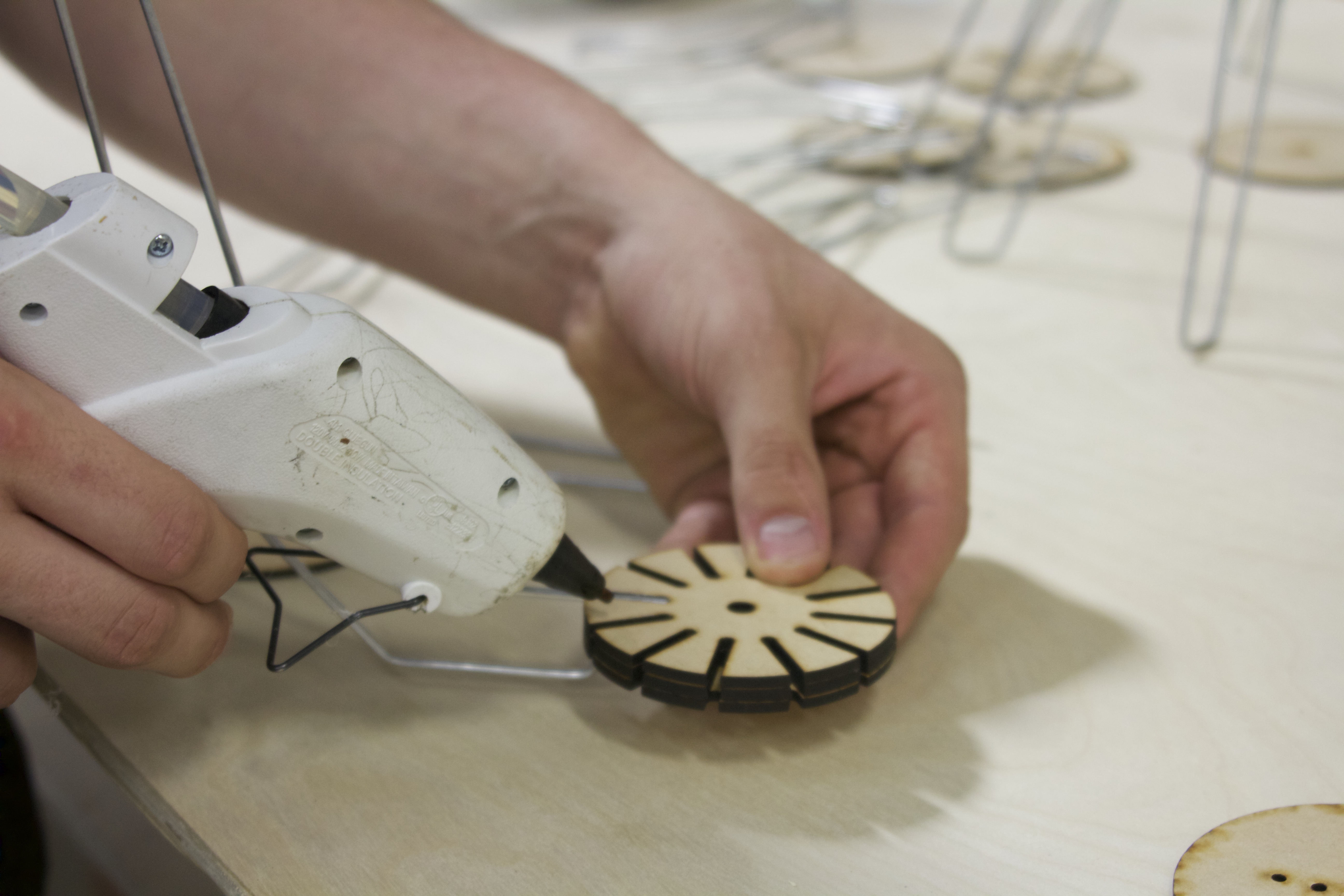
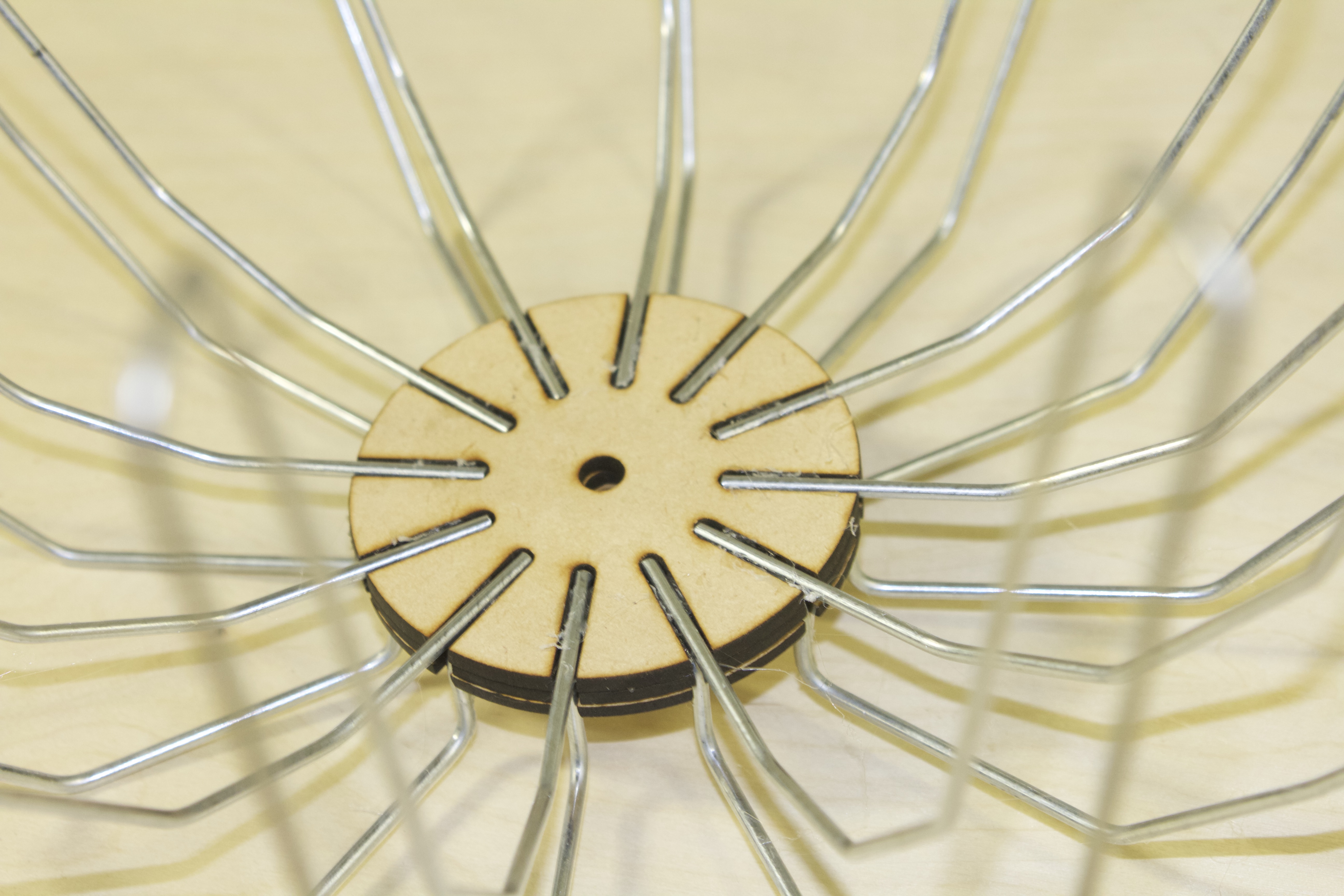
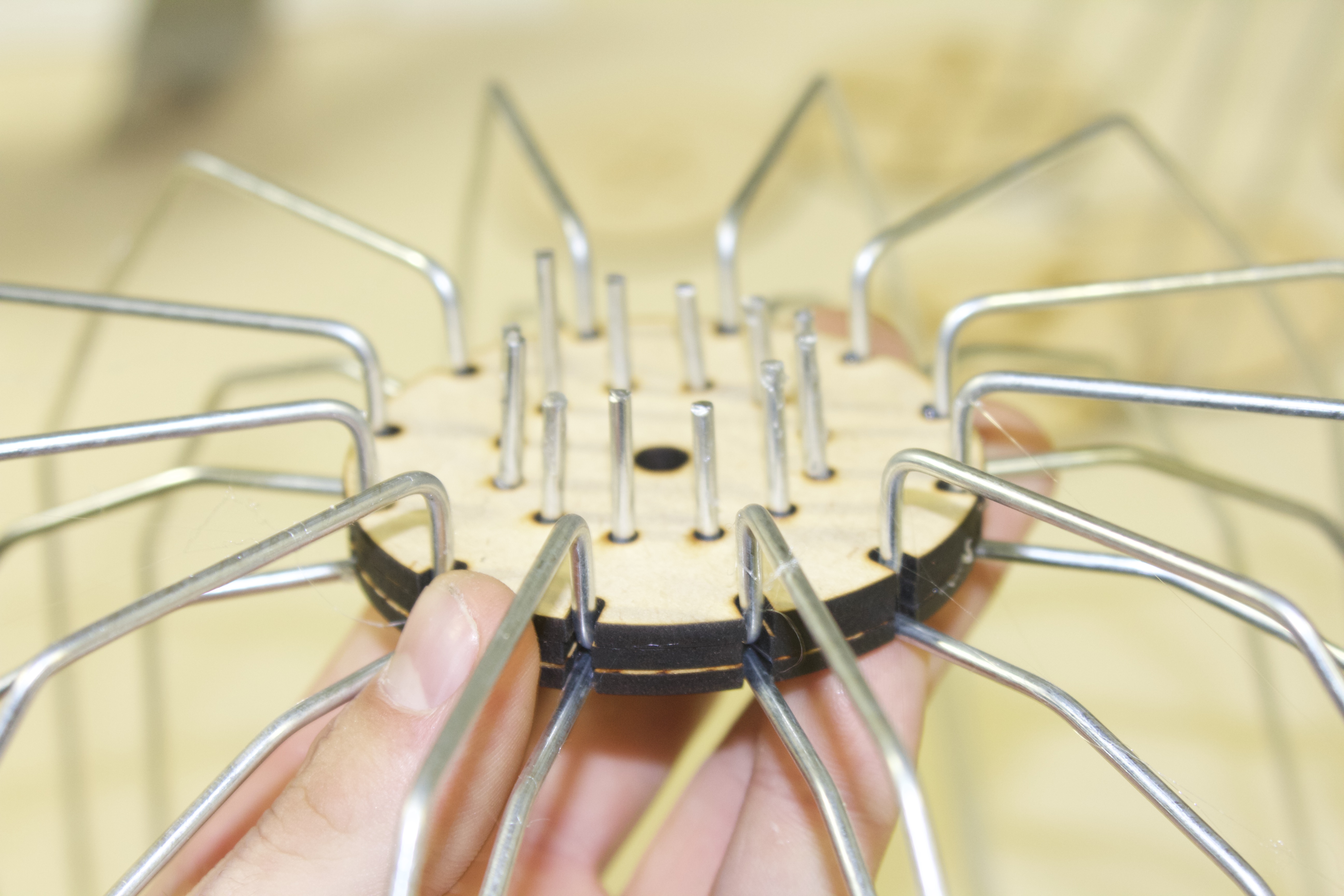
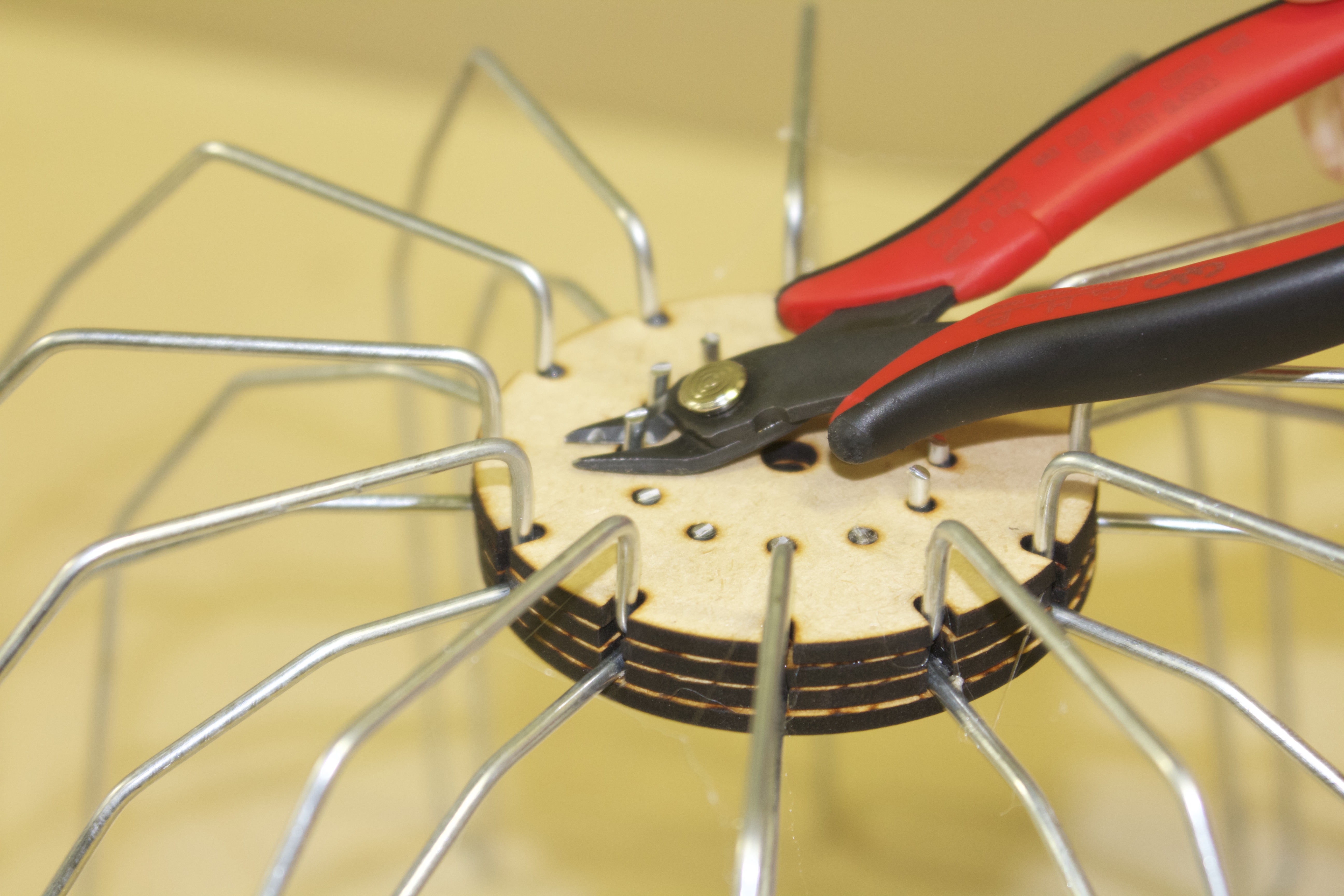
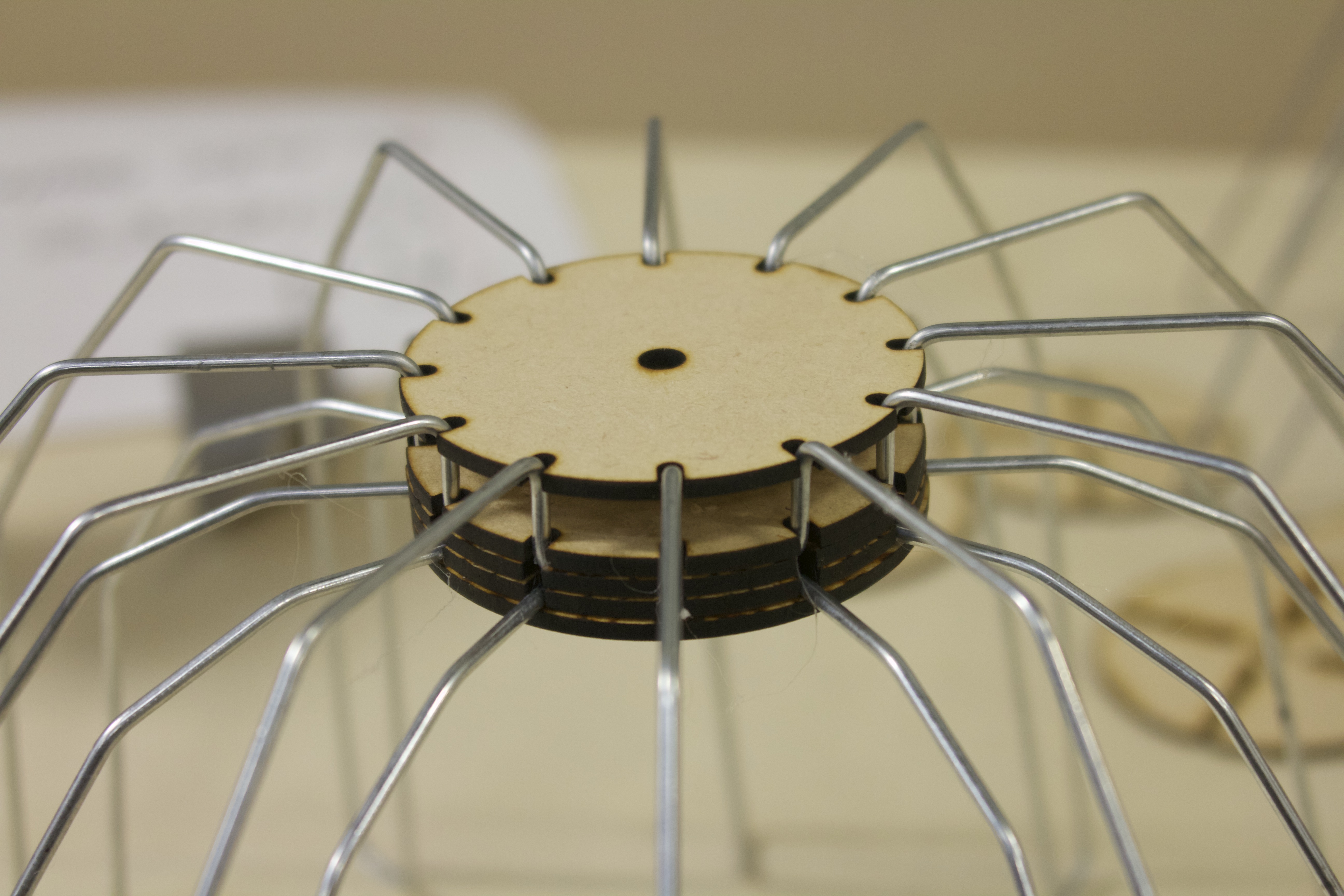
A. Start this assembly by hot gluing together “Layer 2,” “Layer 3”, and “Layer 4” from the “Lampshade Assembly” folder.
B. These three pieces are what the “Lampshade Spokes” go into. Flip the wooden pieces upside down and put the square side of the “Lampshade Spoke” into the channel and out of the bottom holes of the wooden pieces. Hot glue every piece in and make sure that the wire sits flush with the top.
C. Use the flush cutters to cut off the ends of the wires that are coming out of the 12 holes on the top.
D. Once this is done, carefully hot glue “Layer 1” and “Layer 5” onto the top and the bottom of the lamp. This will close in all of wire pieces and everything should be sturdy.
Final Assembly
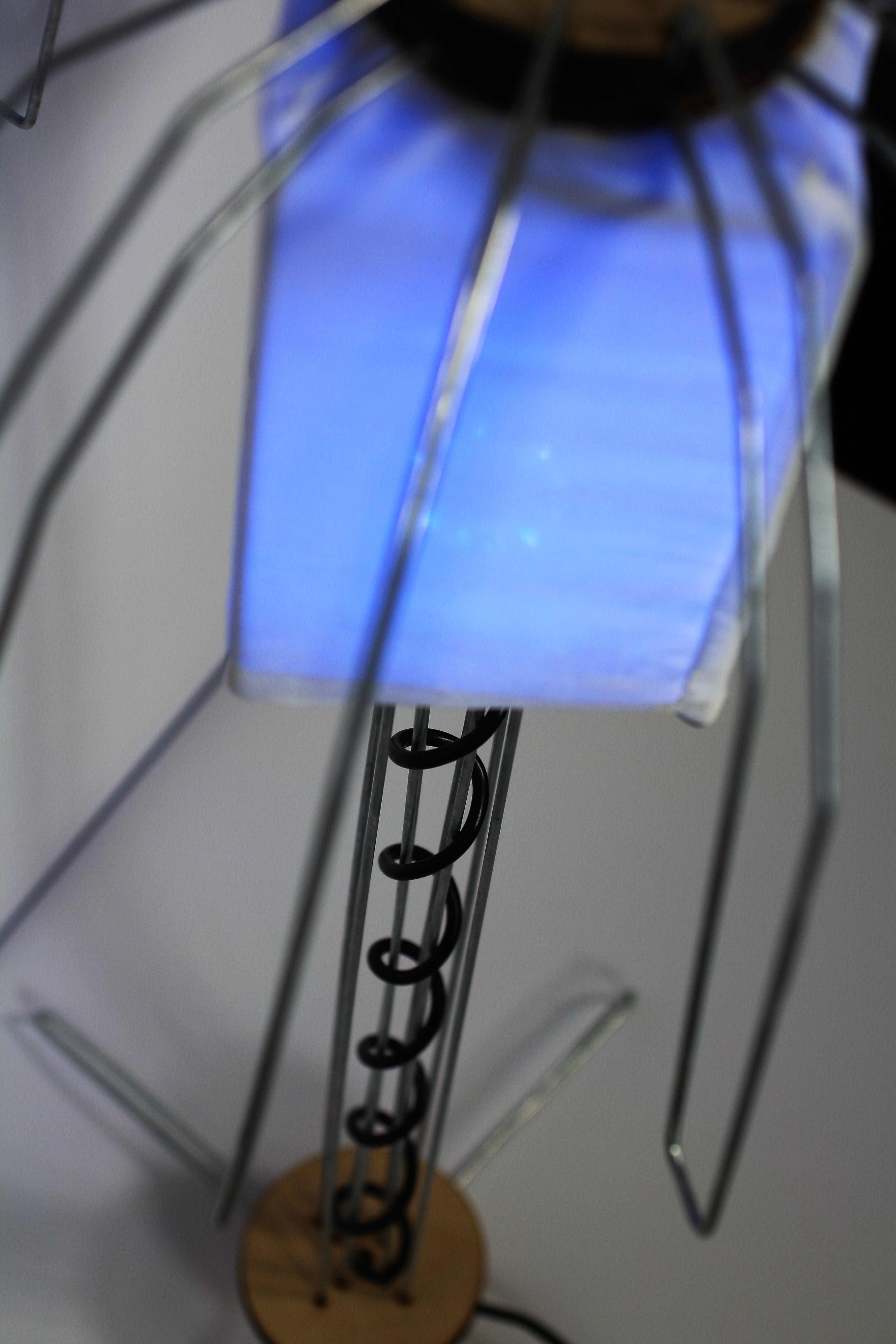
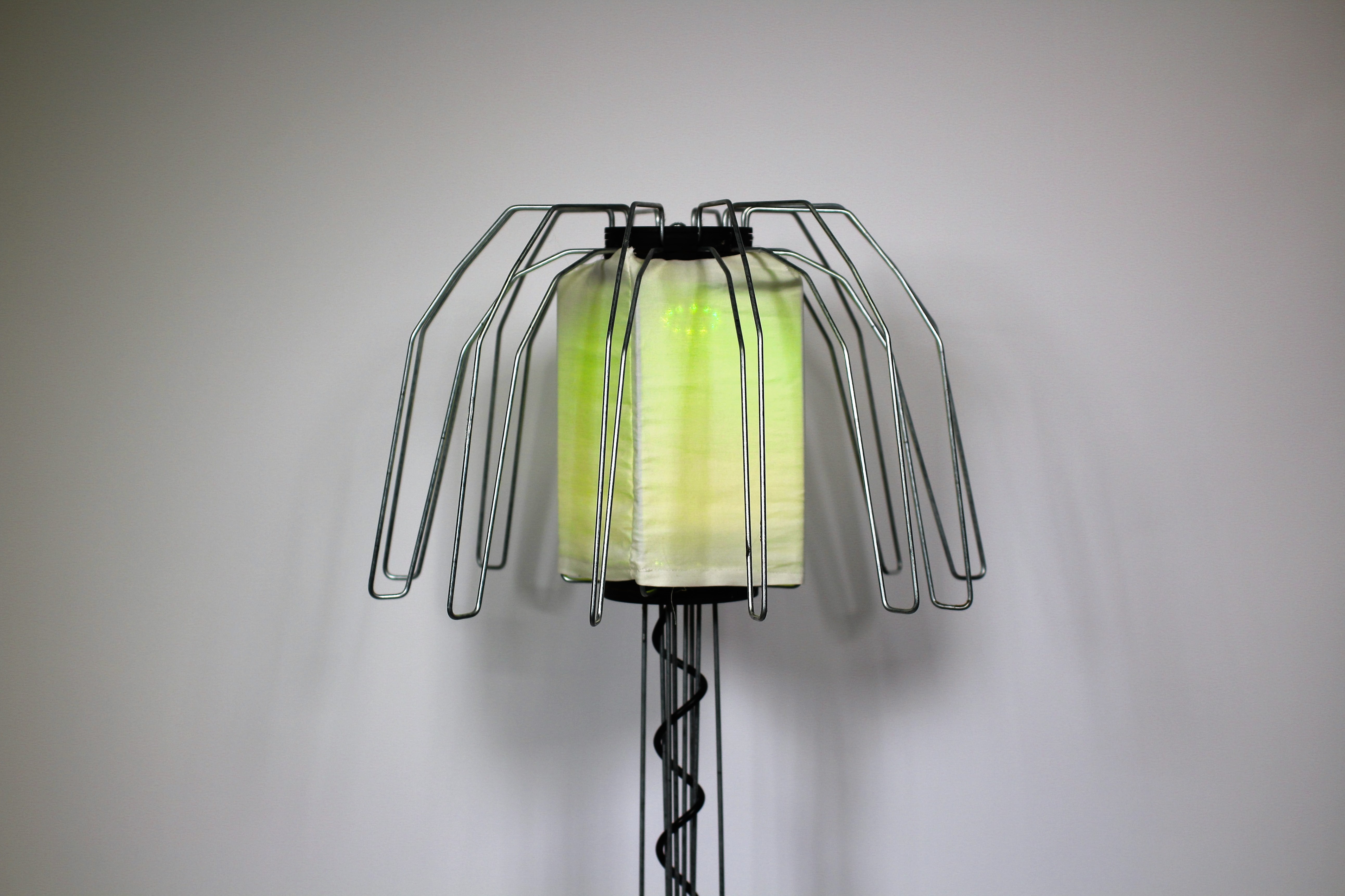
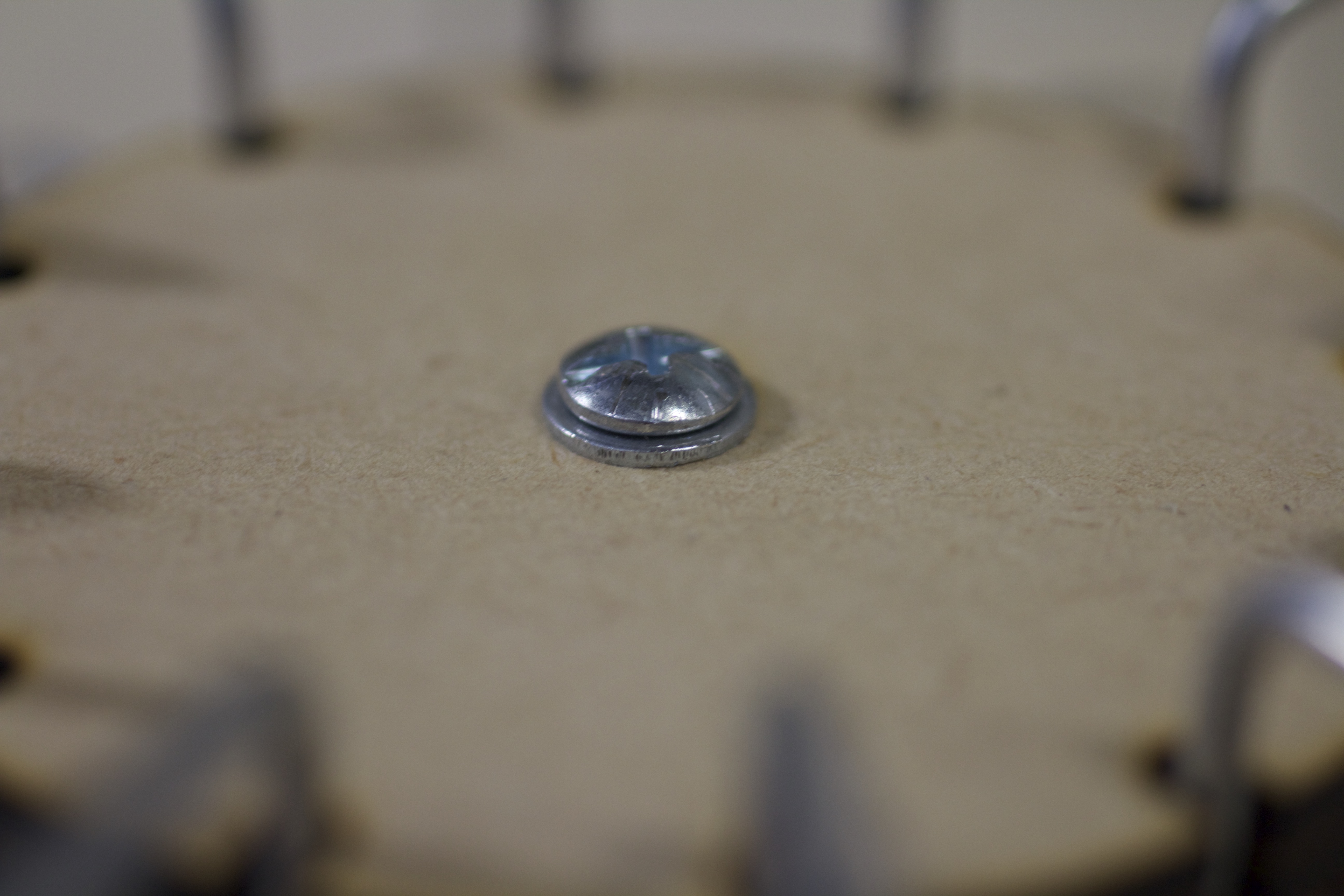
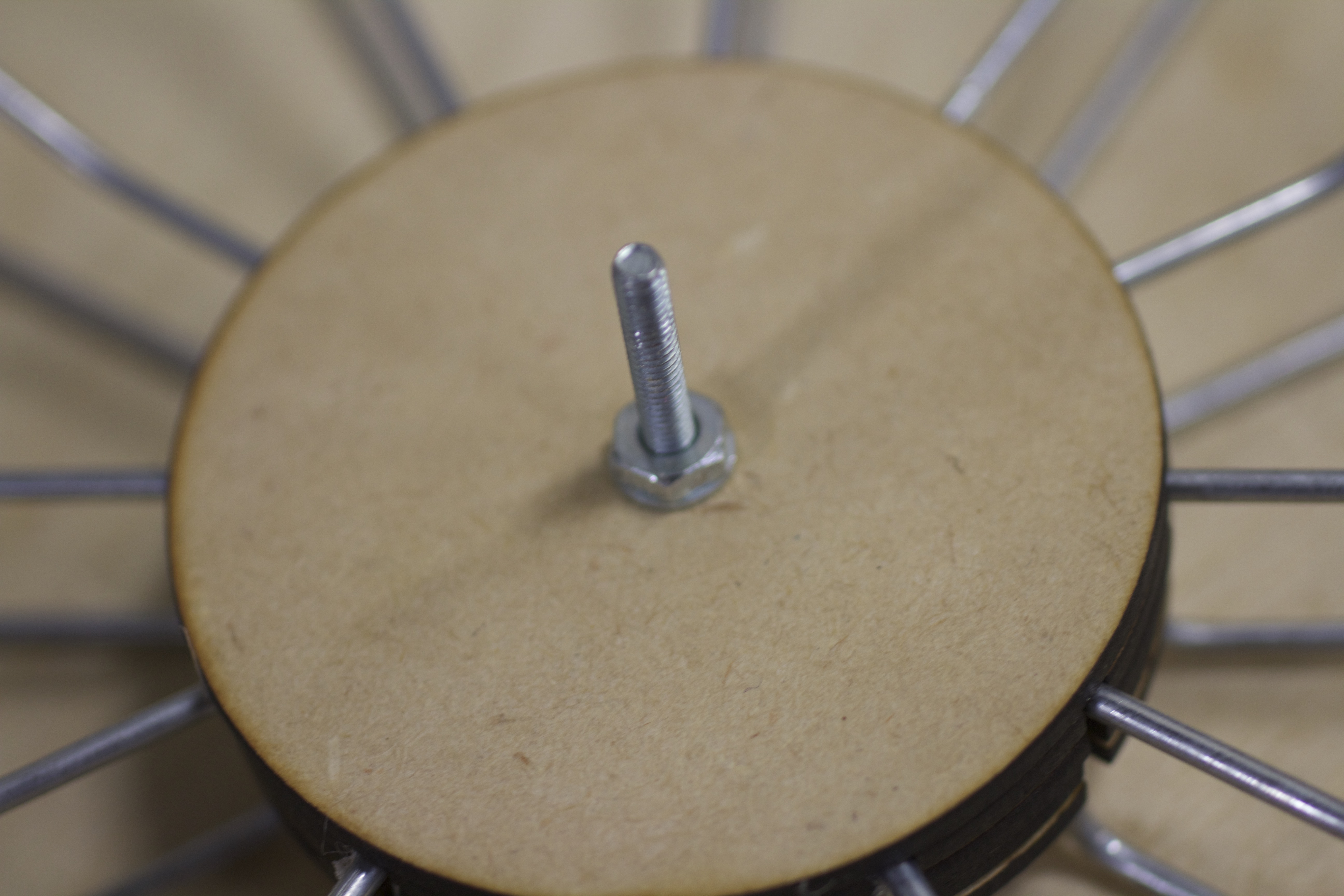
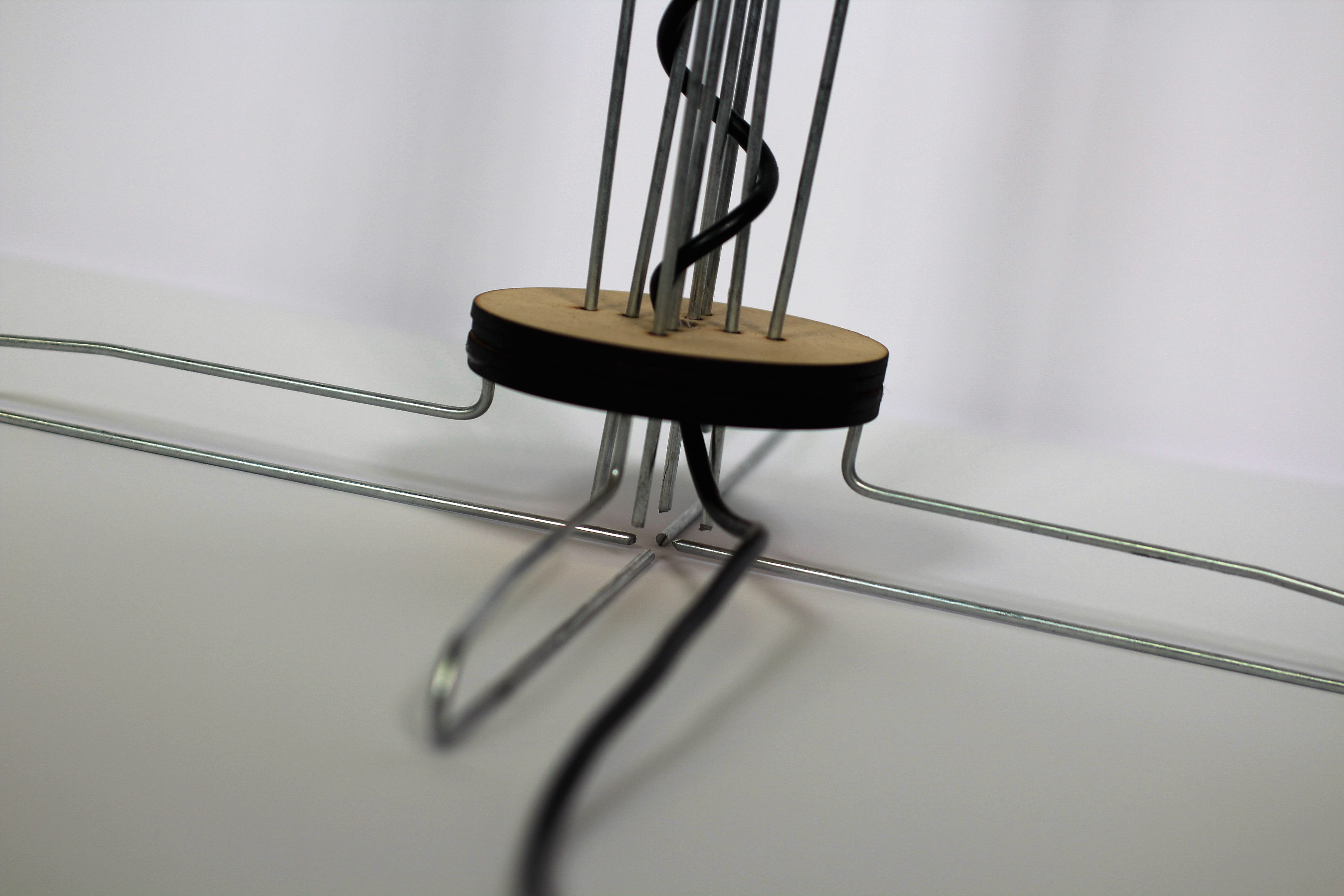
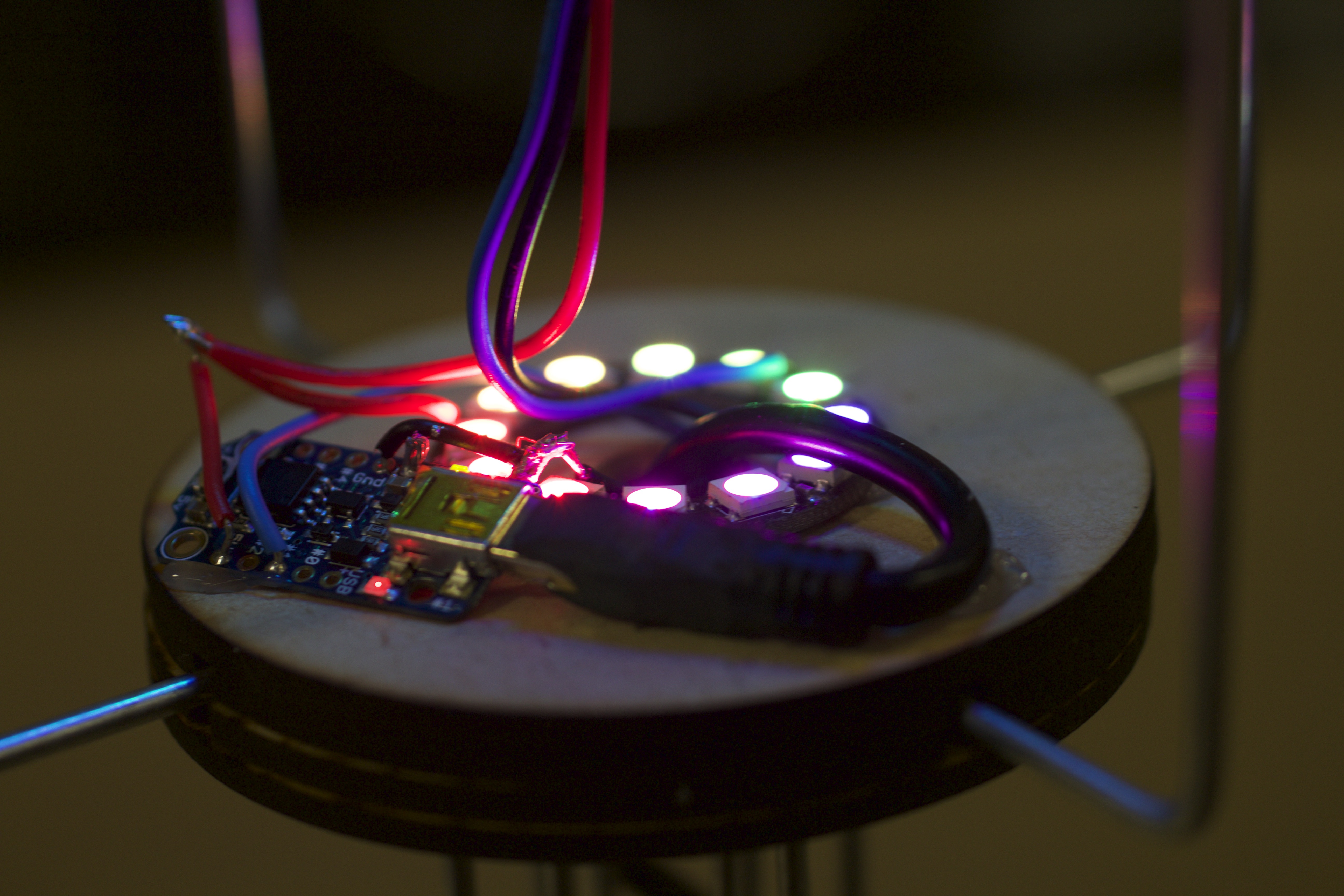

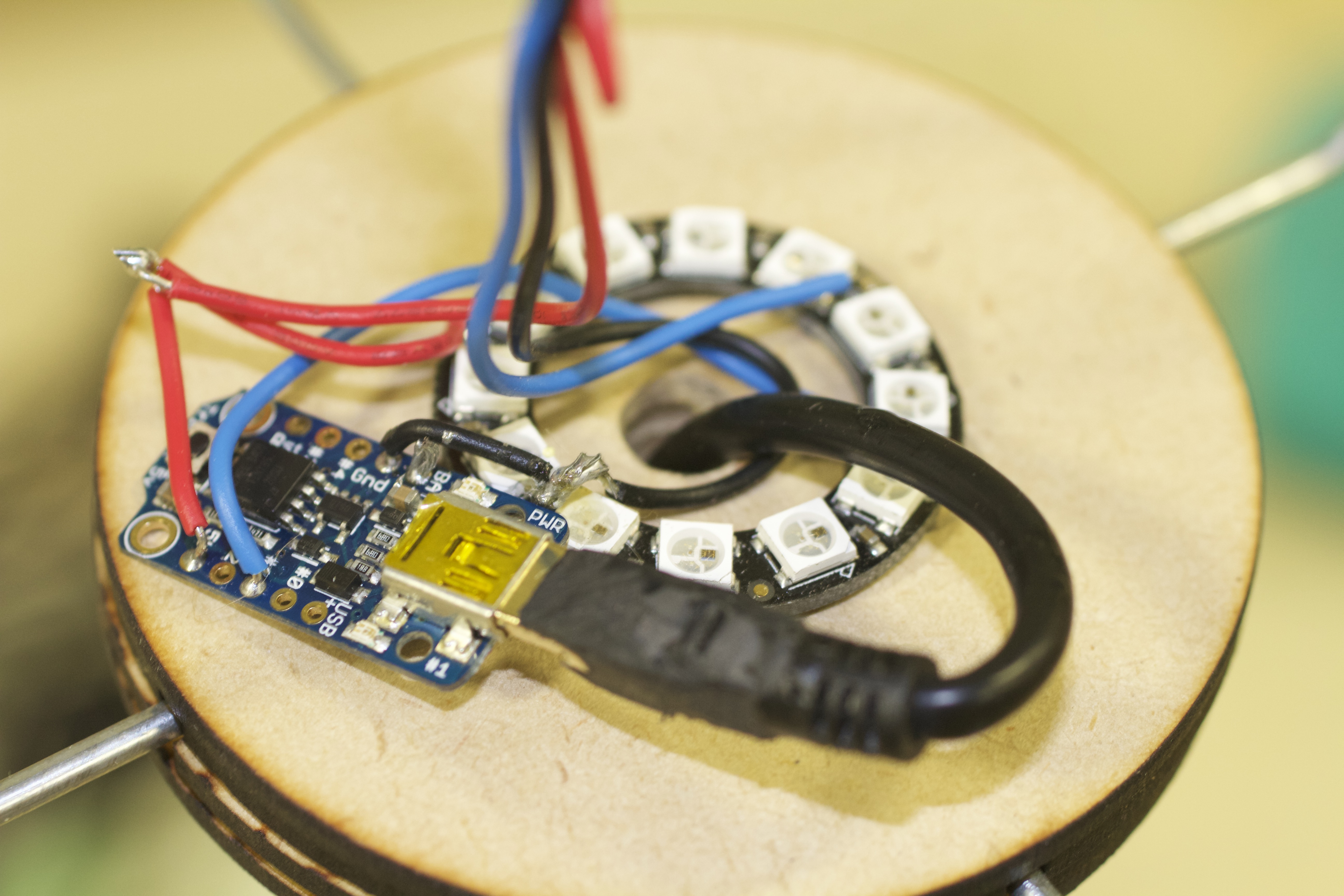
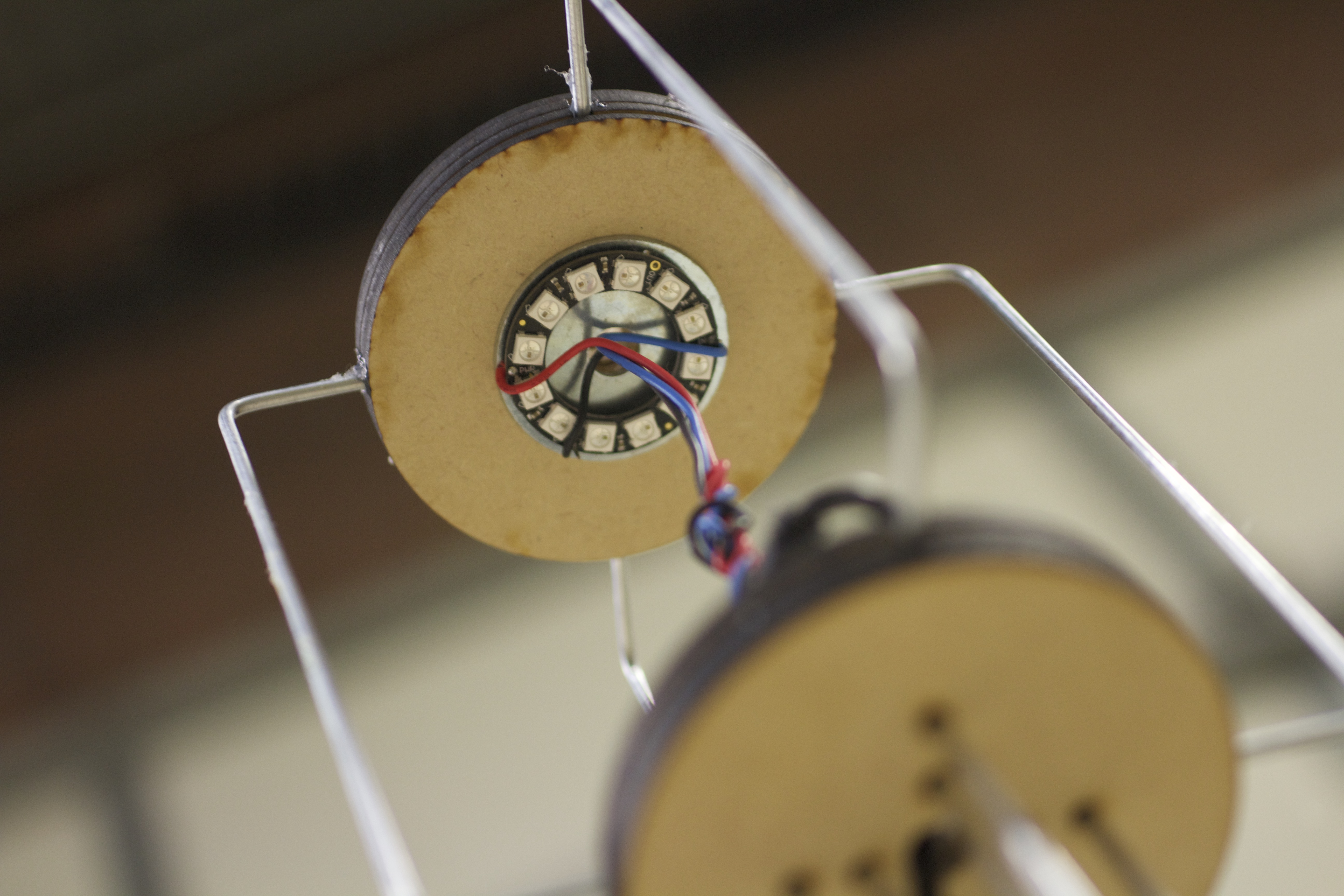
A. Start the final assembly by installing the cord and the lights. Put the cord in through the bottom and wrap the cord around the “Inner Lamp Post” in a spiral until it reaches the top. Leave 3”-4” of room at the top so there isn’t a lot of extra wire.
B. Attach the Adafruit Trinket assembly to the end of this cord. Put one of the NeoPixel rings on the top facing downwards and one on the bottom facing upwards. The Trinket will be right next to the bottom NeoPixel ring and the cord will come through the hole in the middle of the NeoPixel ring.
C. Now the lights are done, and it’s ready to have the lampshades installed. Slide the white cloth shade over the “Top Assembly” where the lights are.
D. Use the 2” long bolt and put it through the “Lampshade Assembly” and the “Top Assembly.” Use the washer and the nut on the bottom where the bolt will come through the middle of the NeoPixel ring.
E. Once the lampshade is installed you are ready to plug it in!